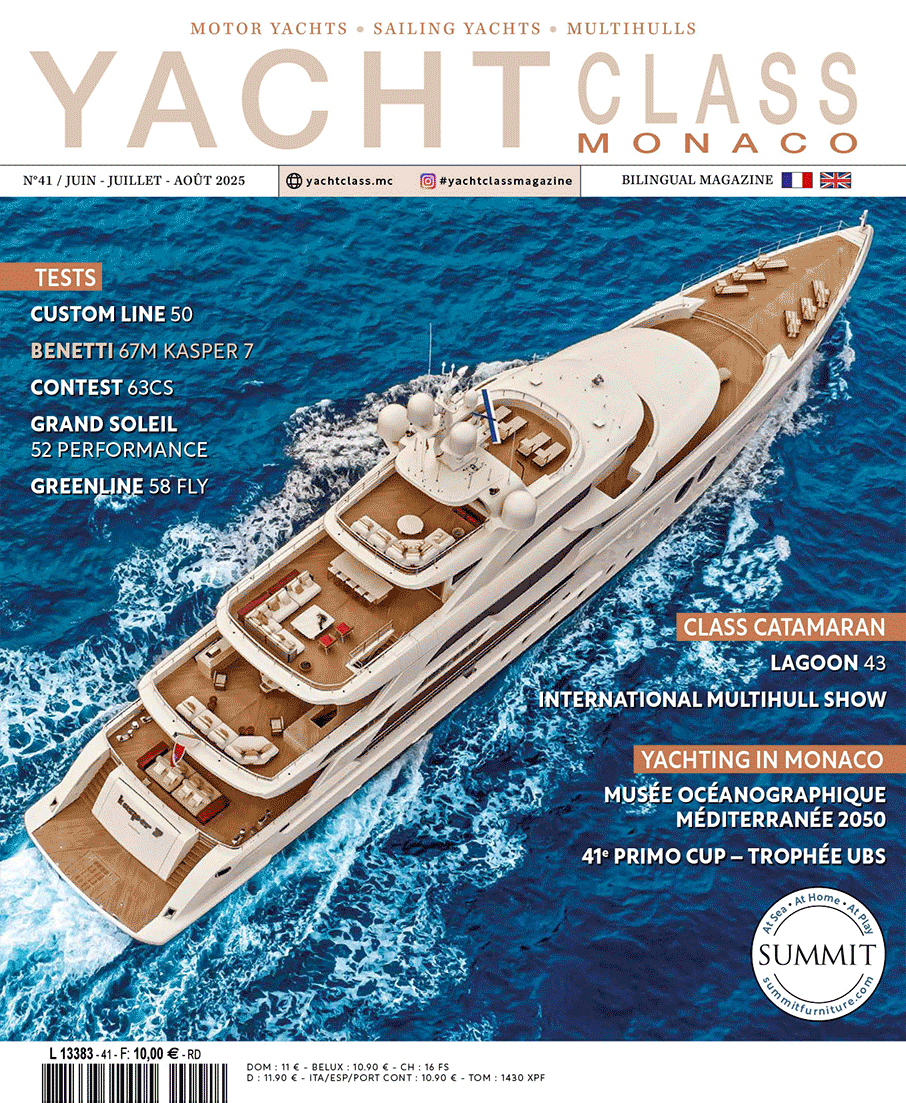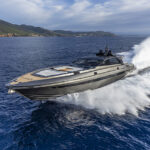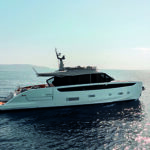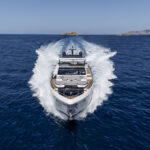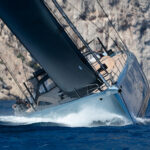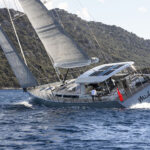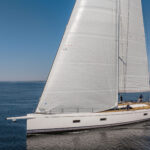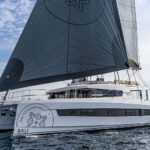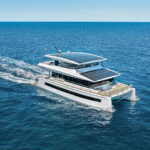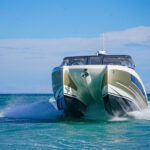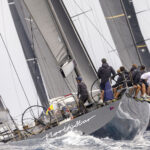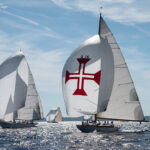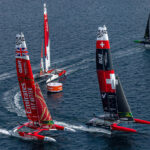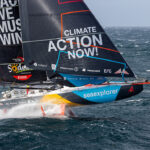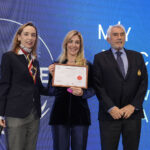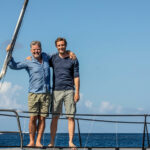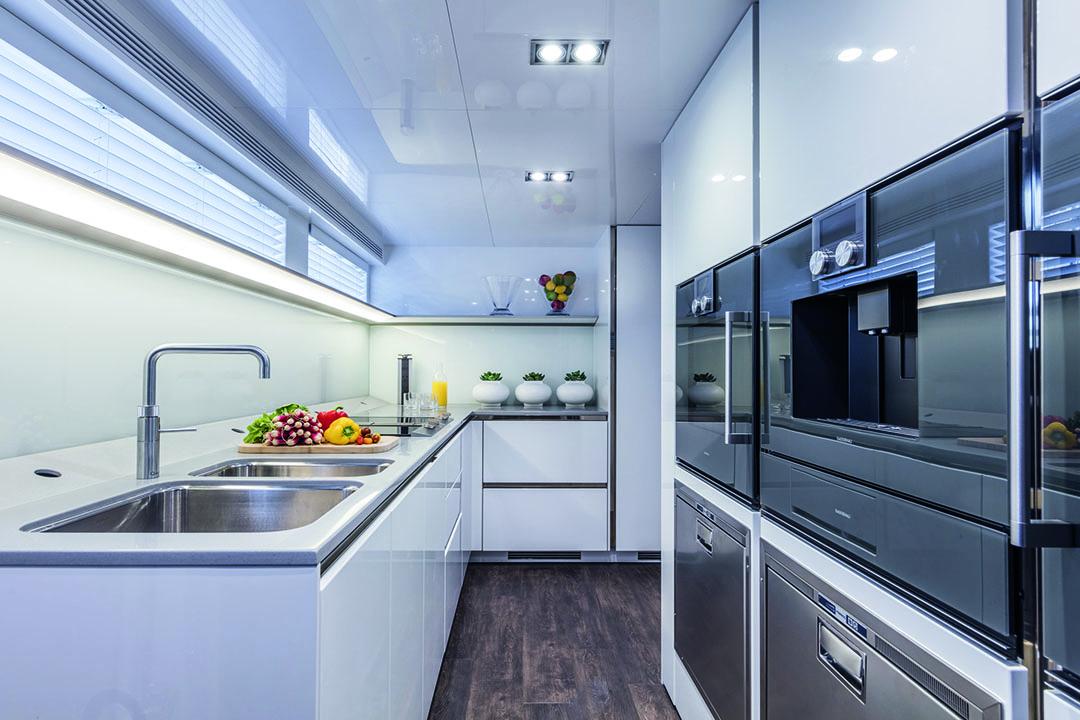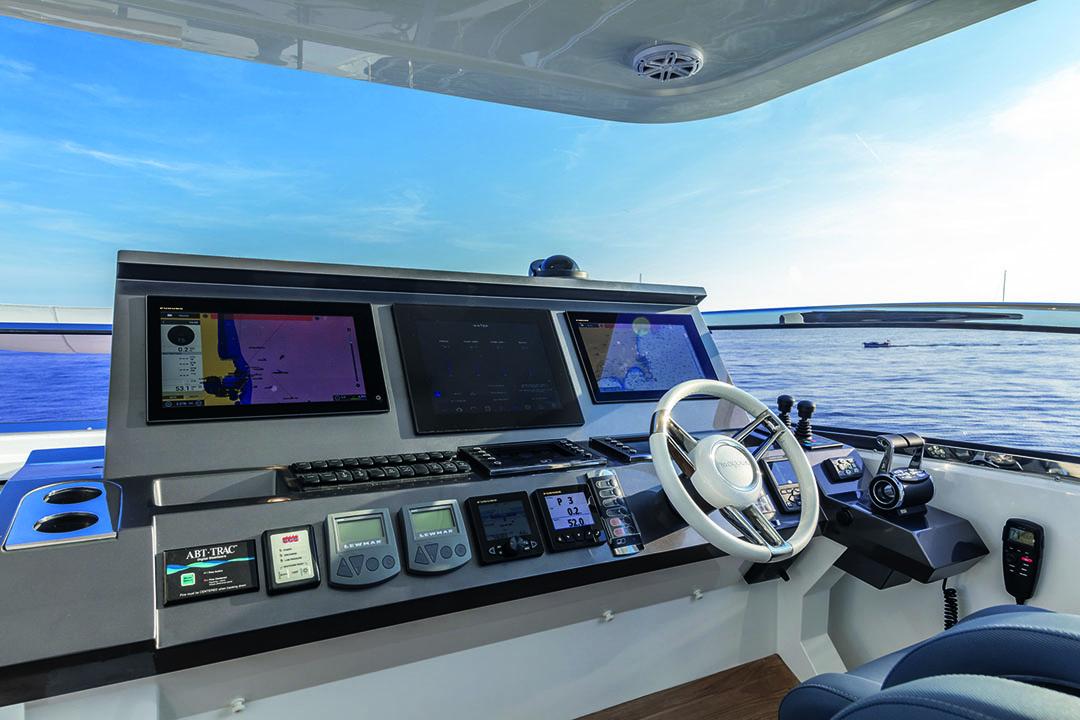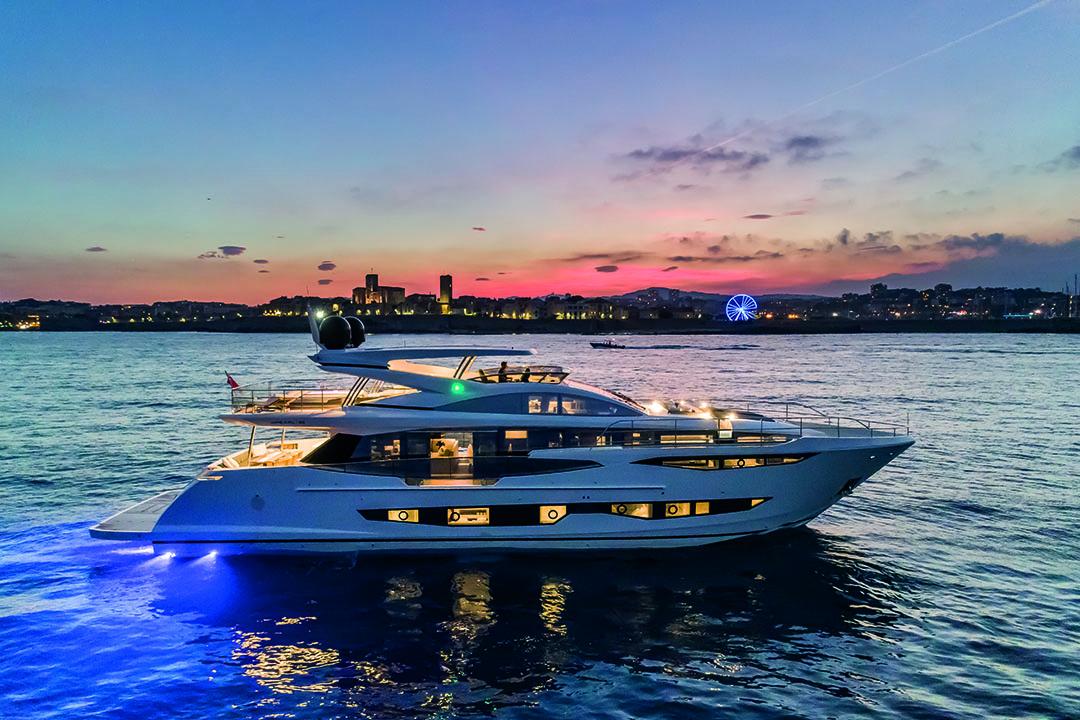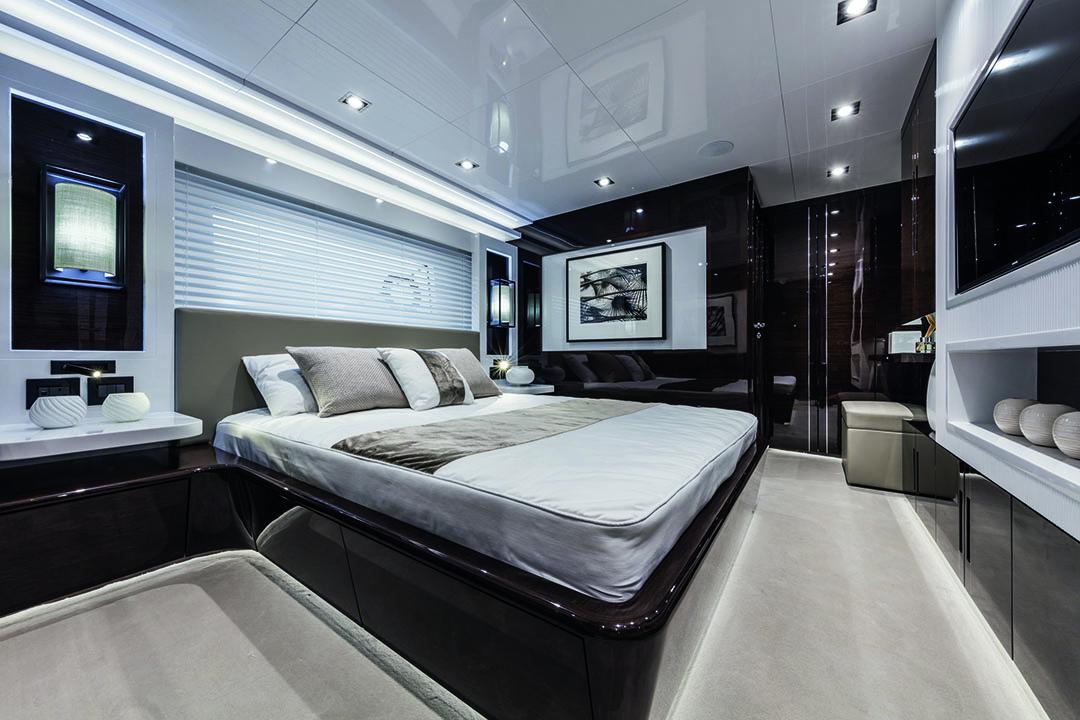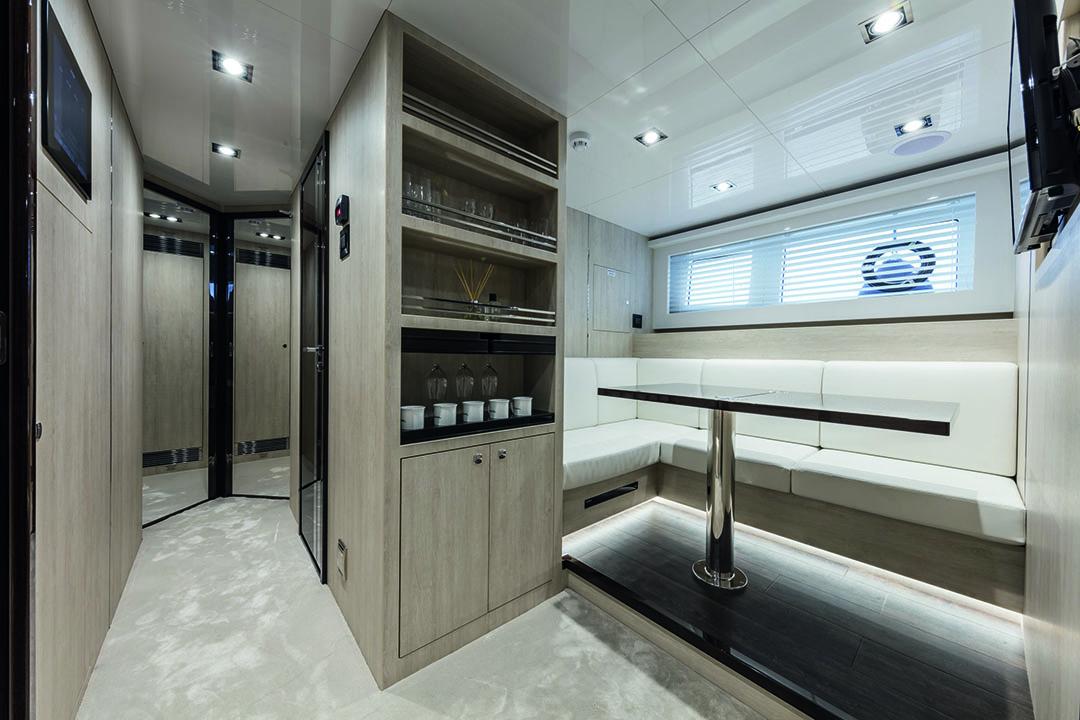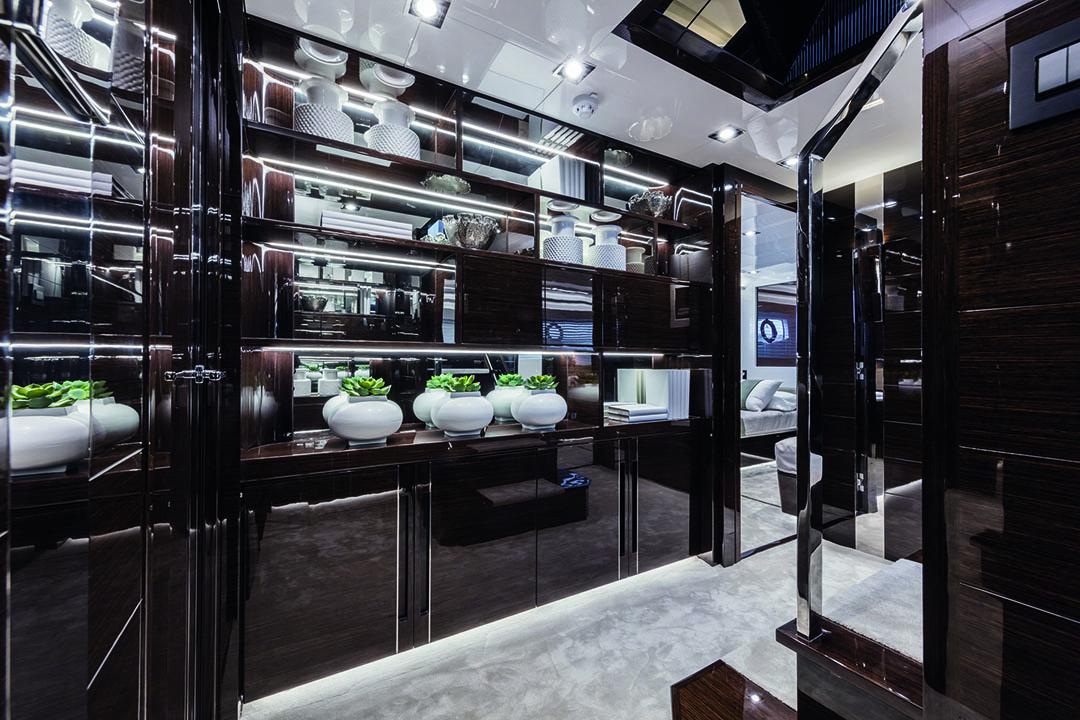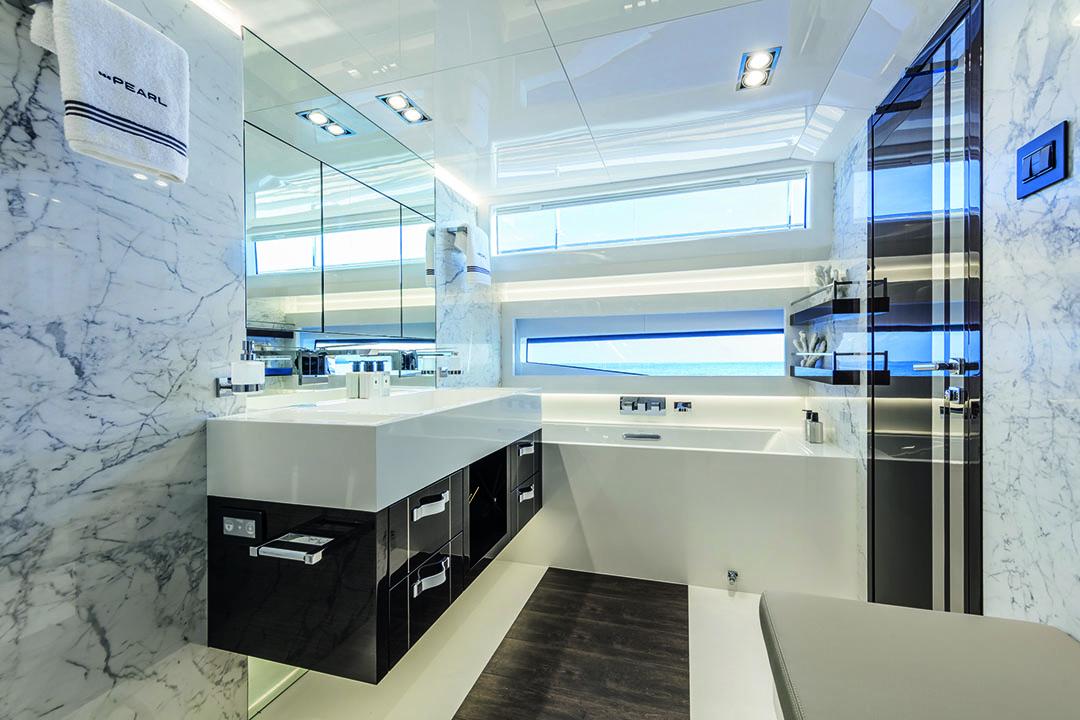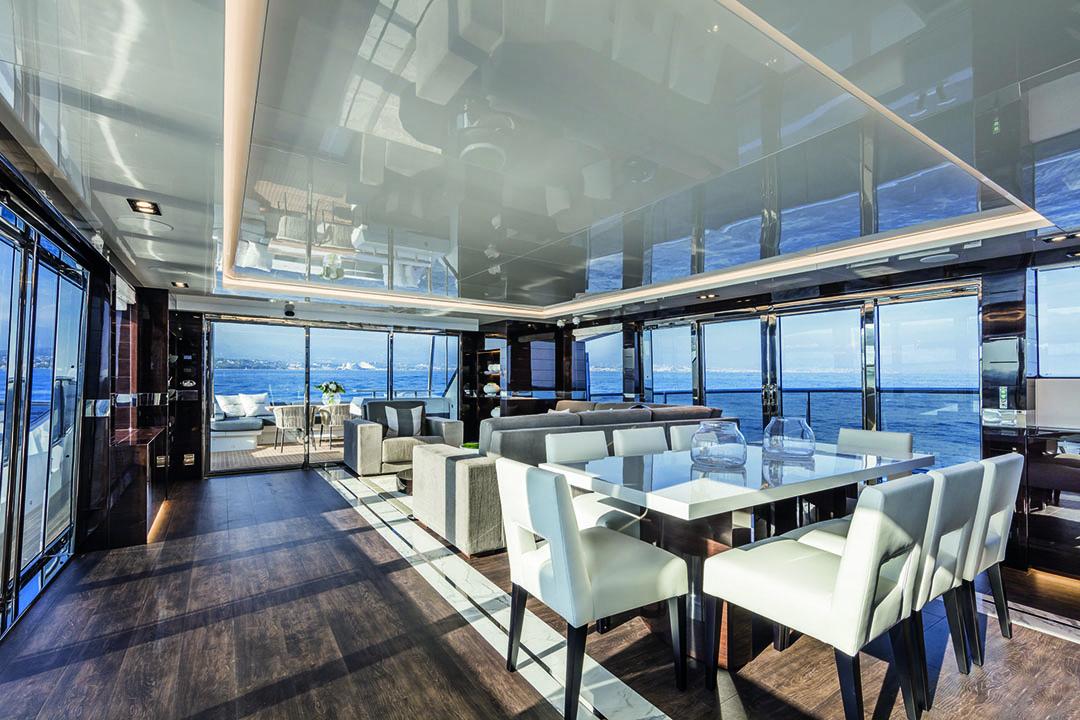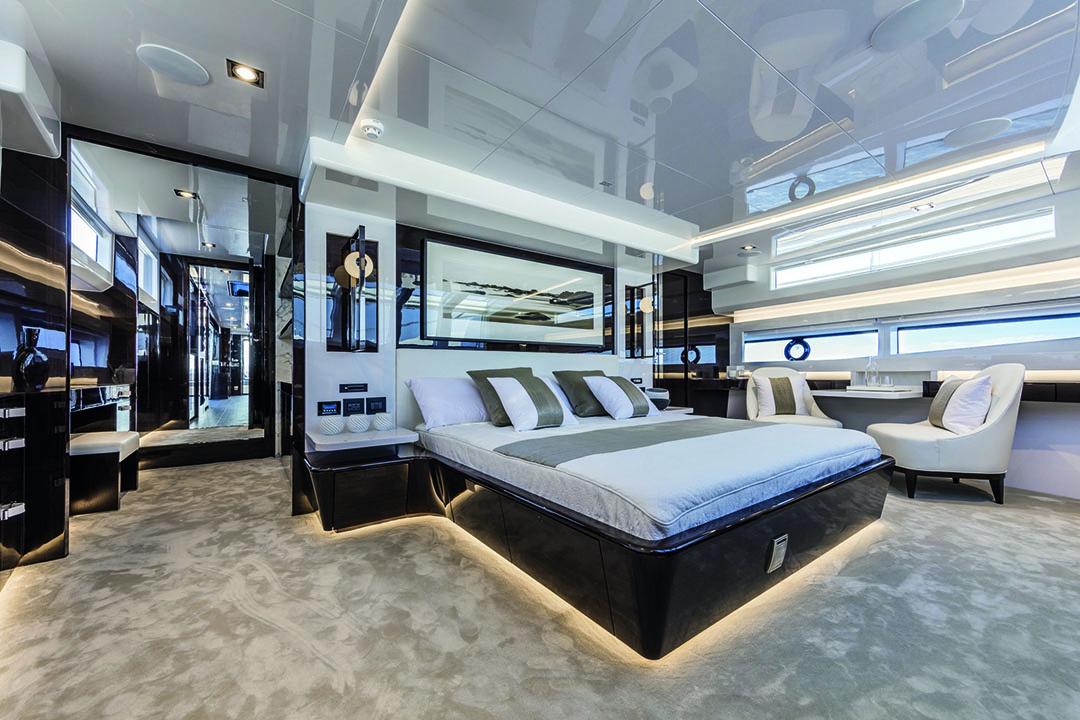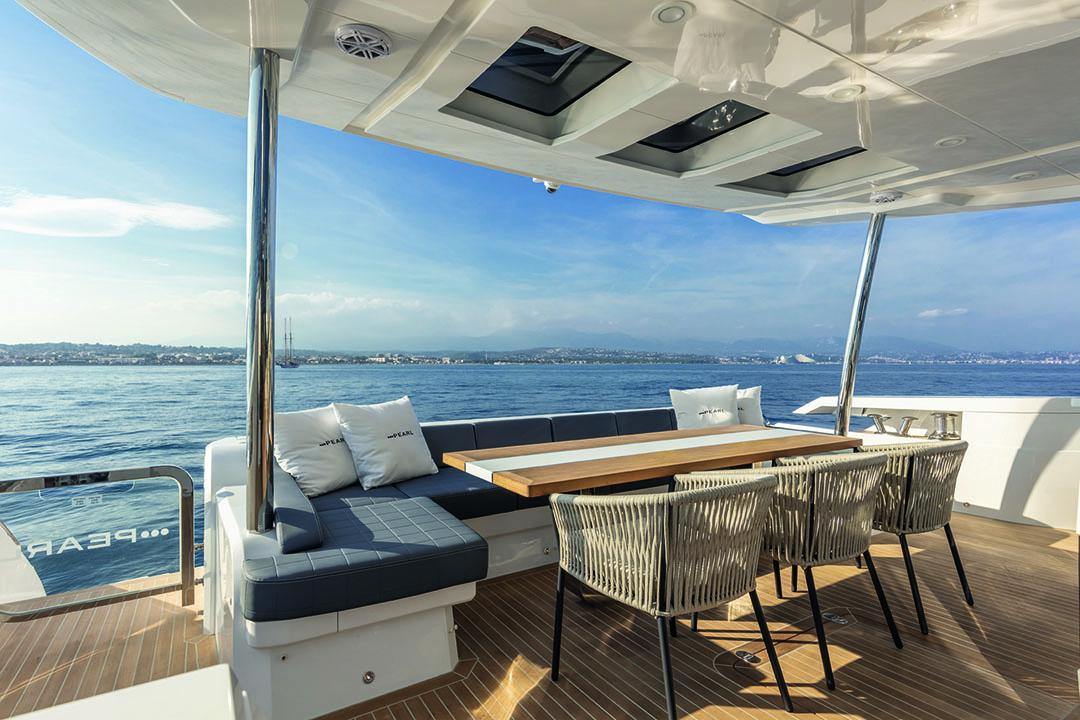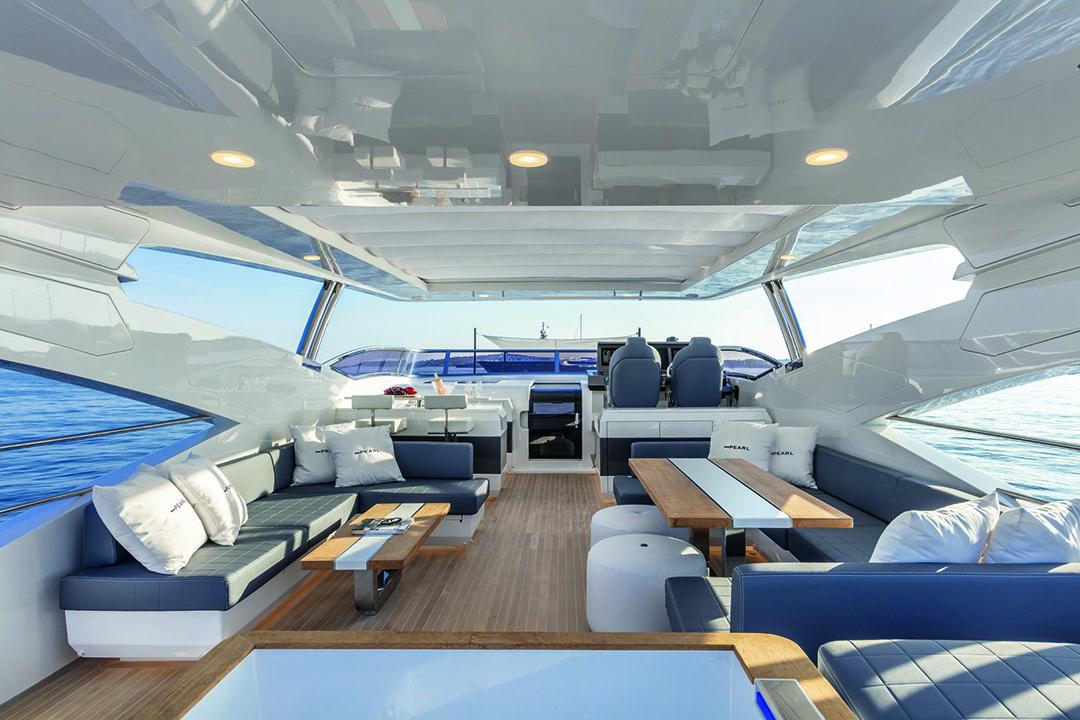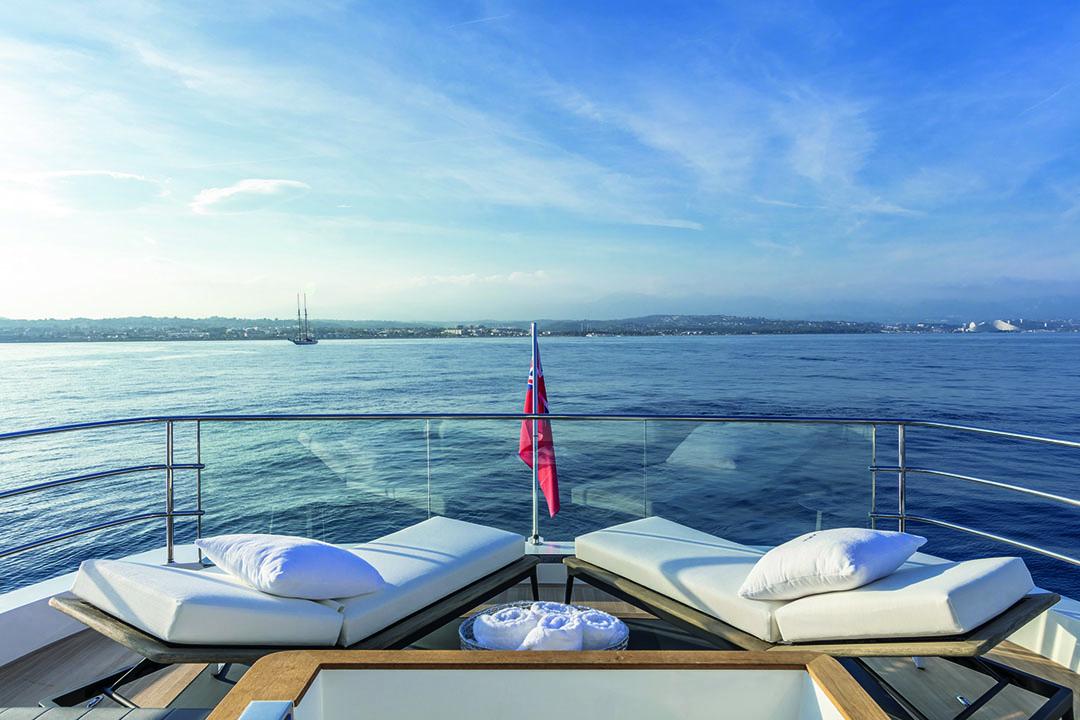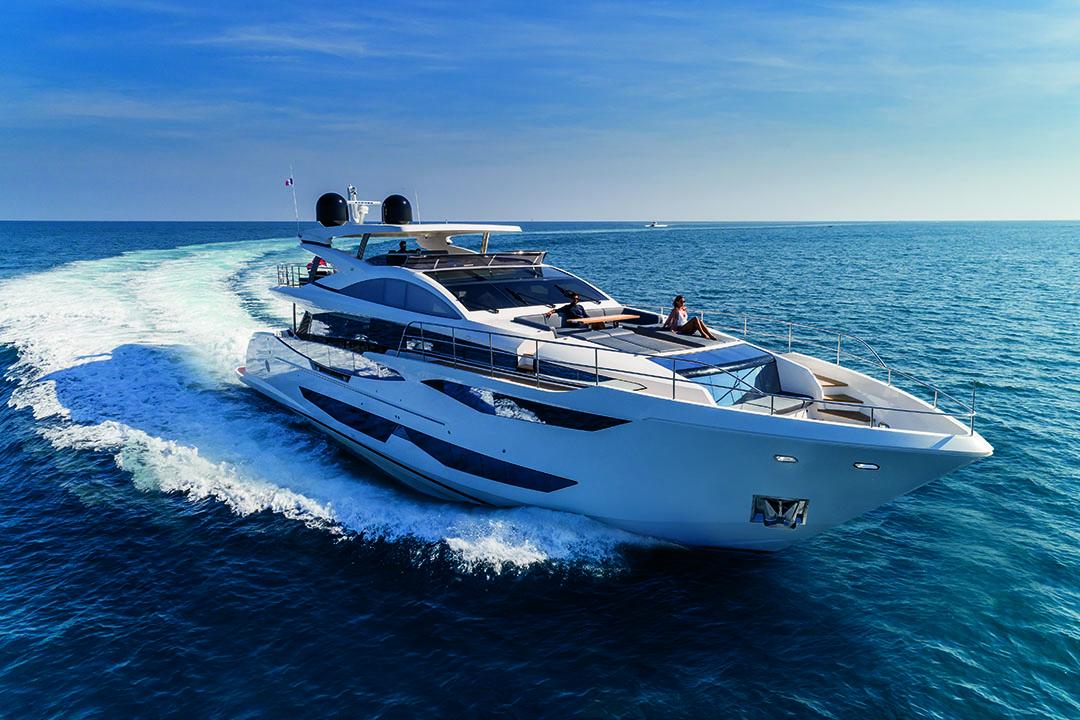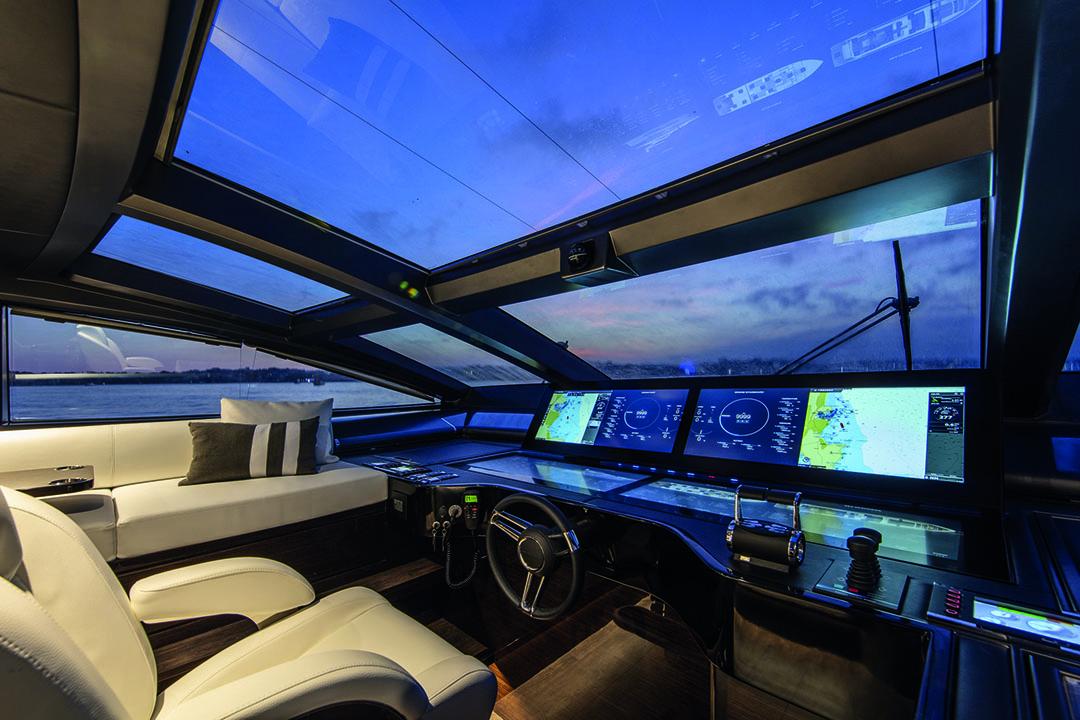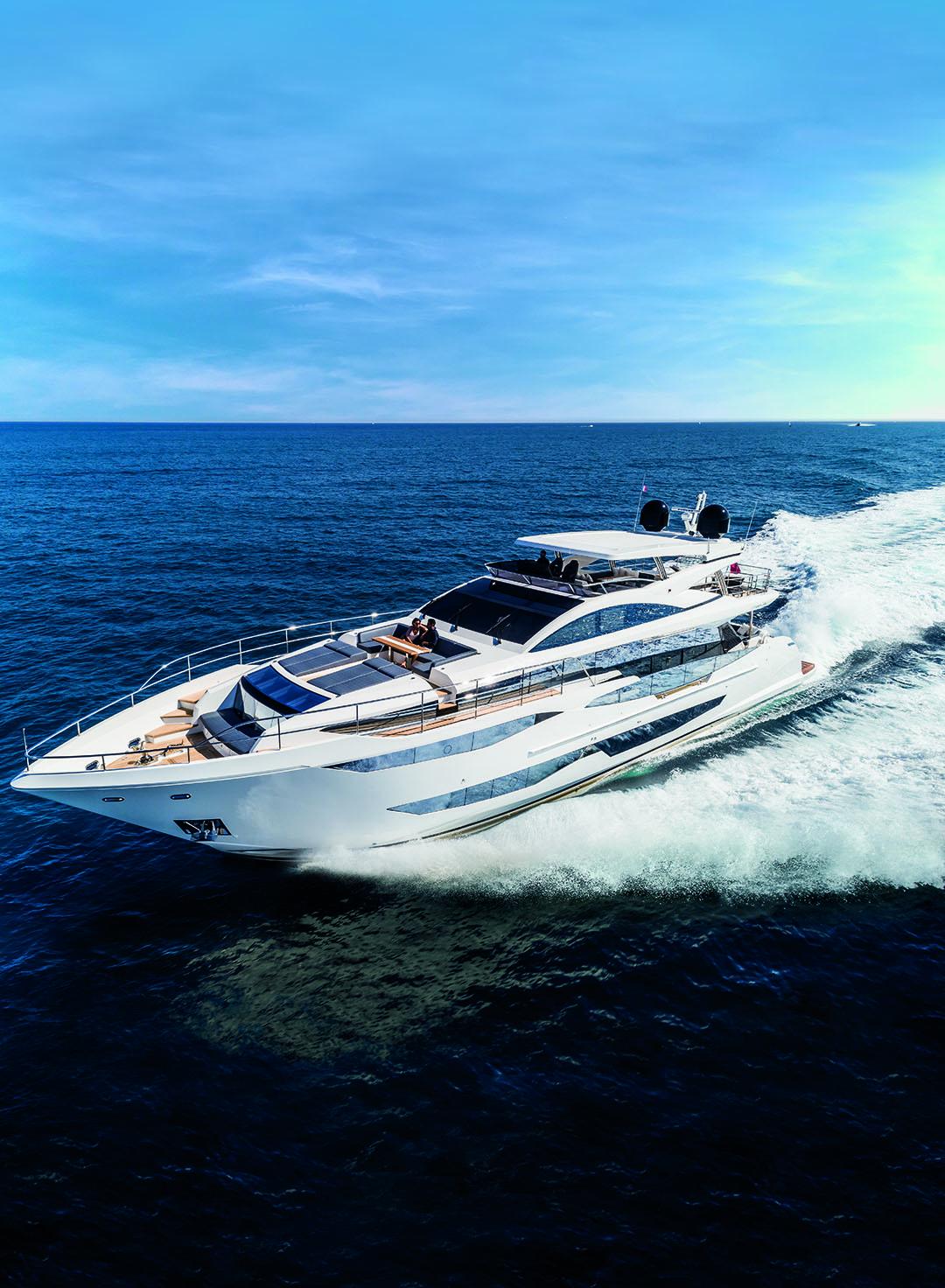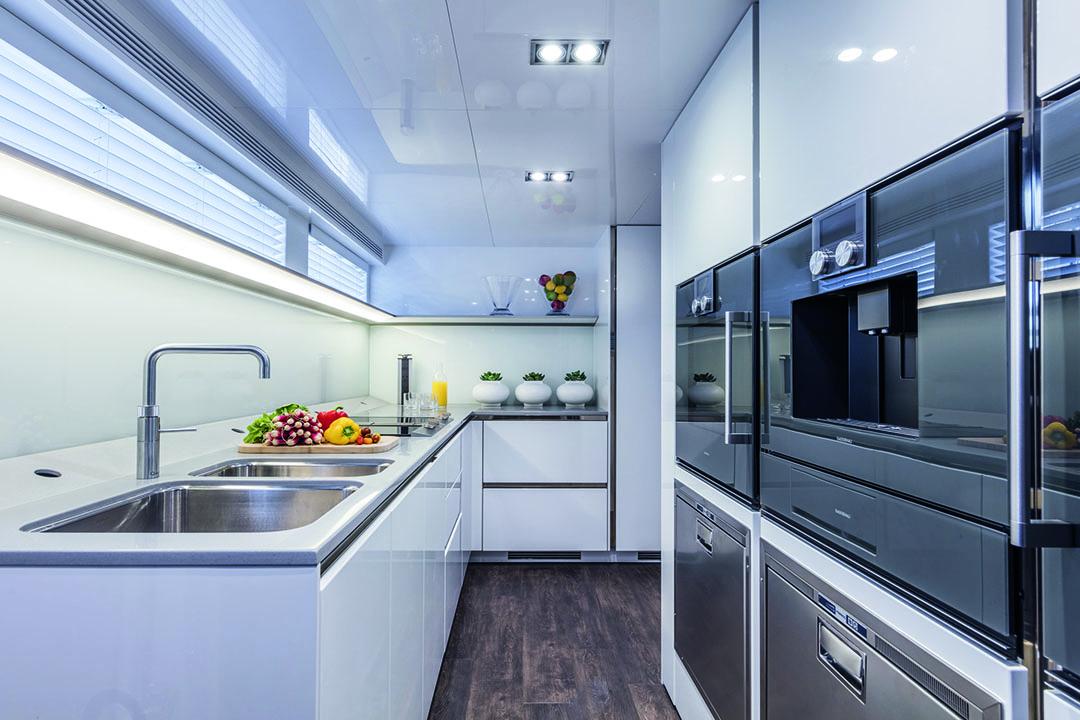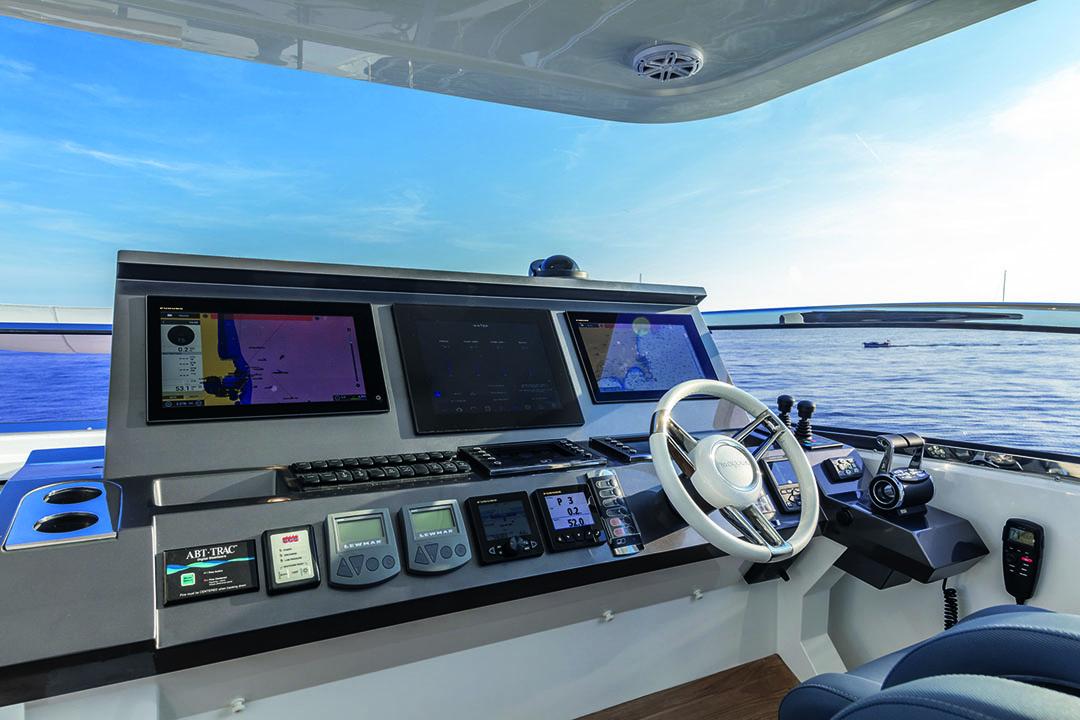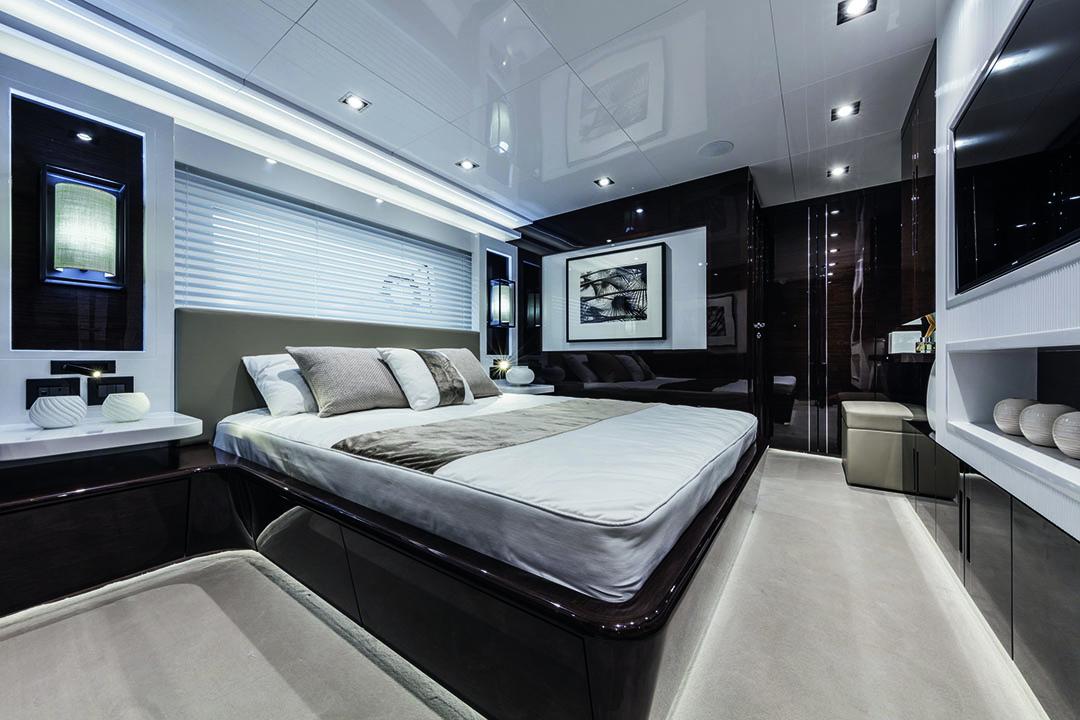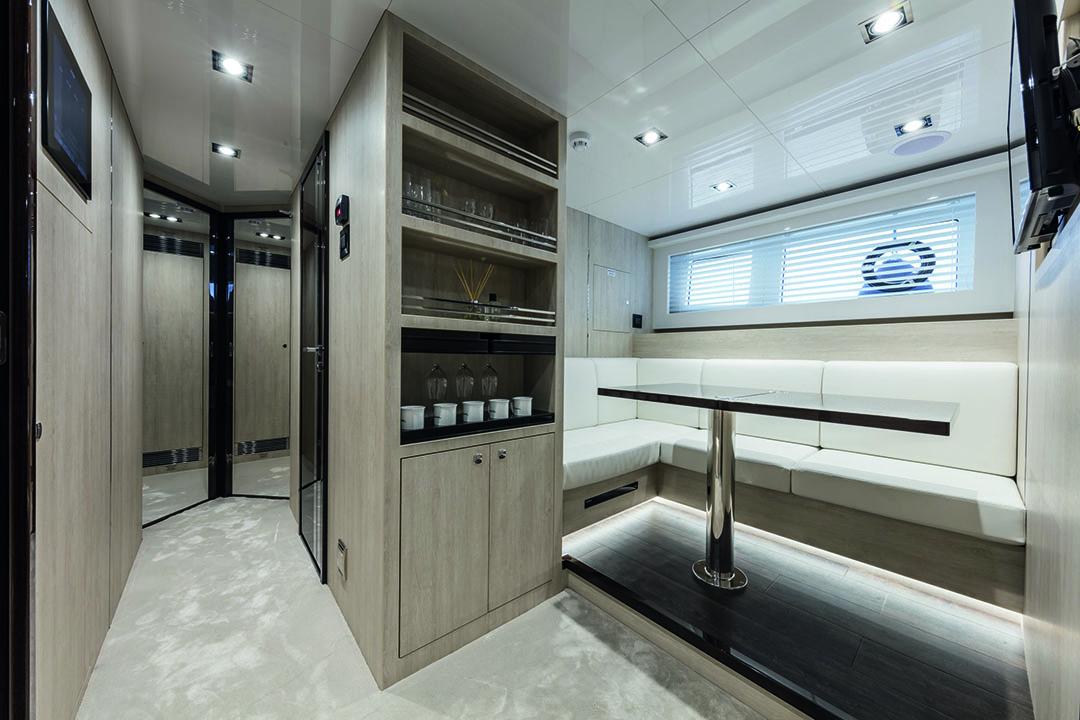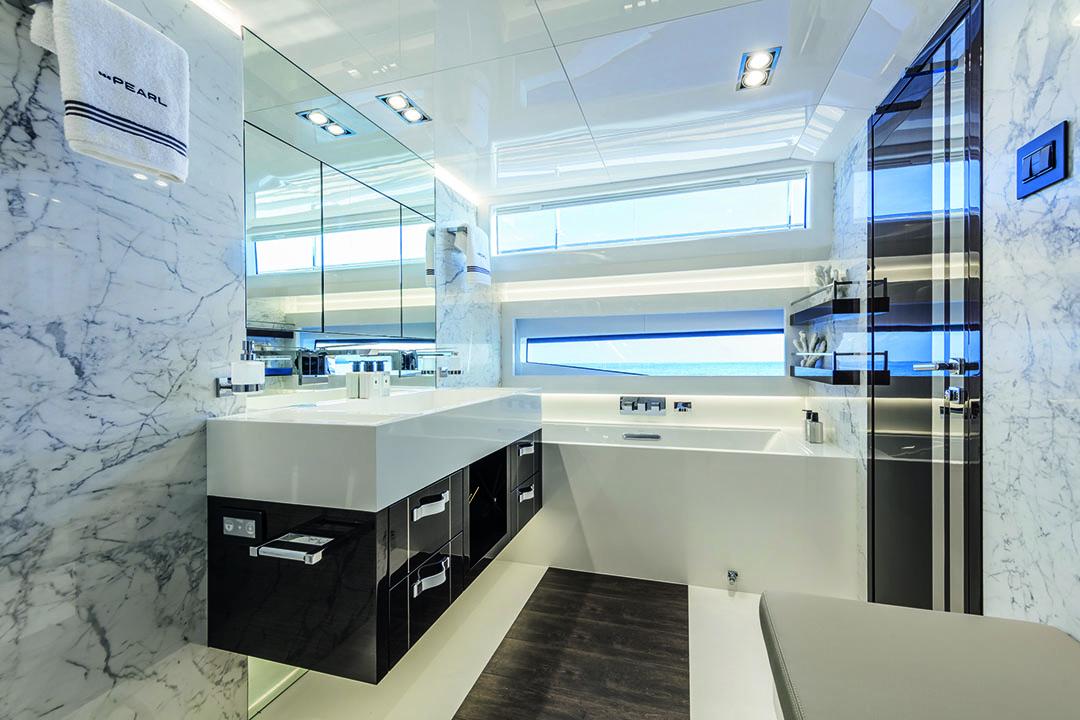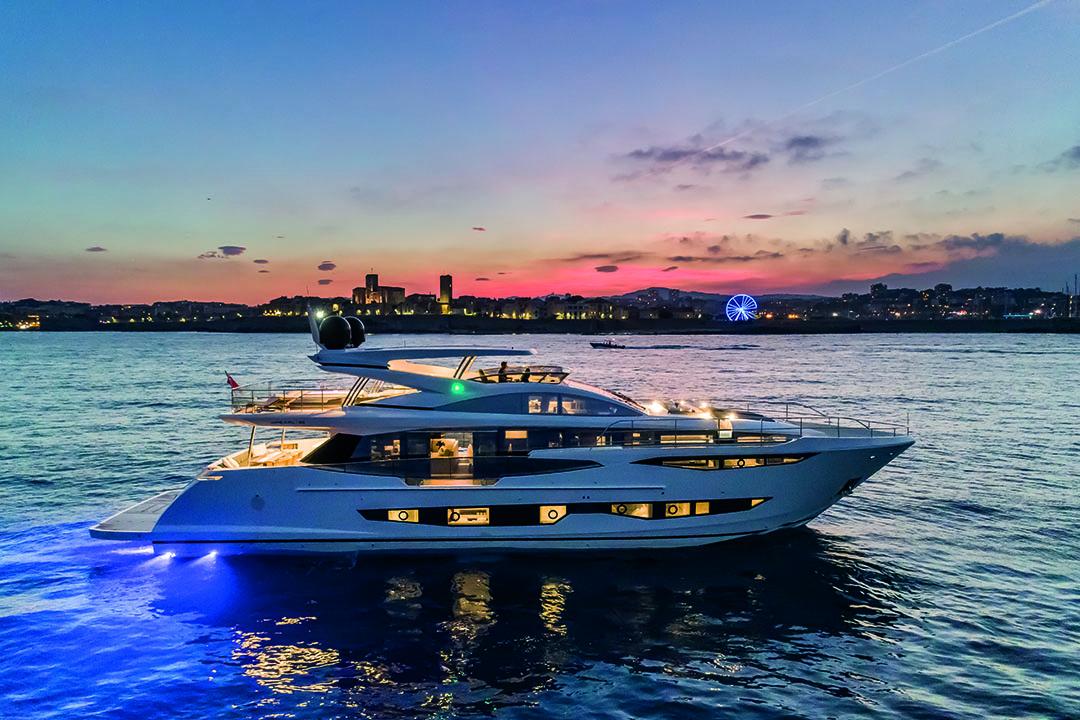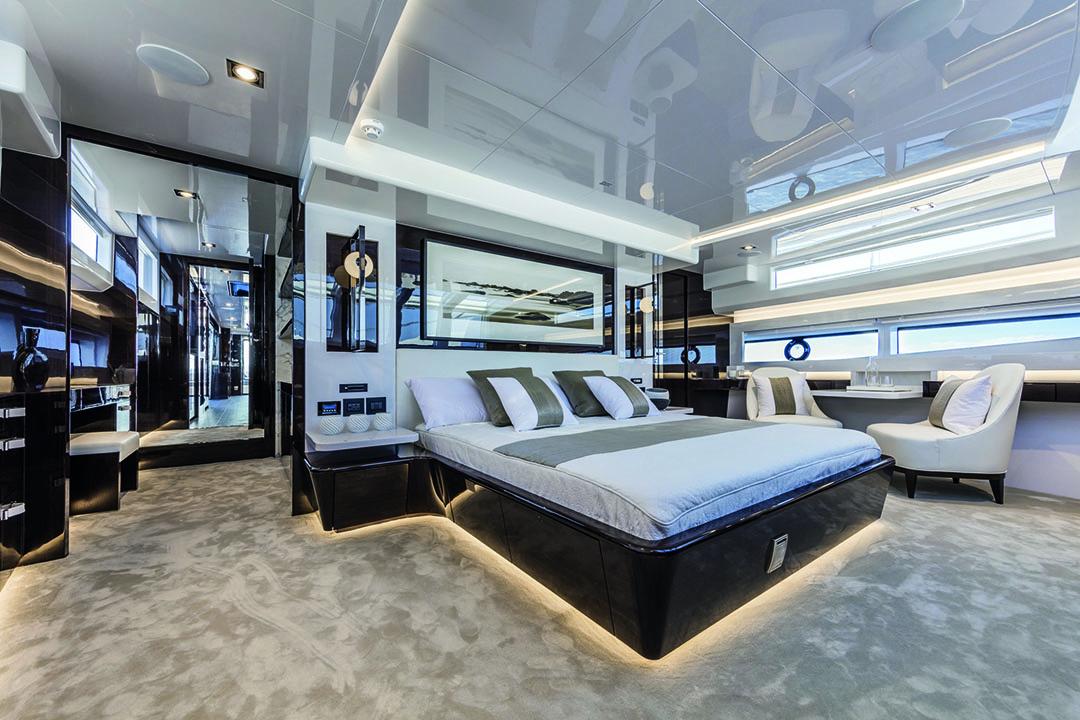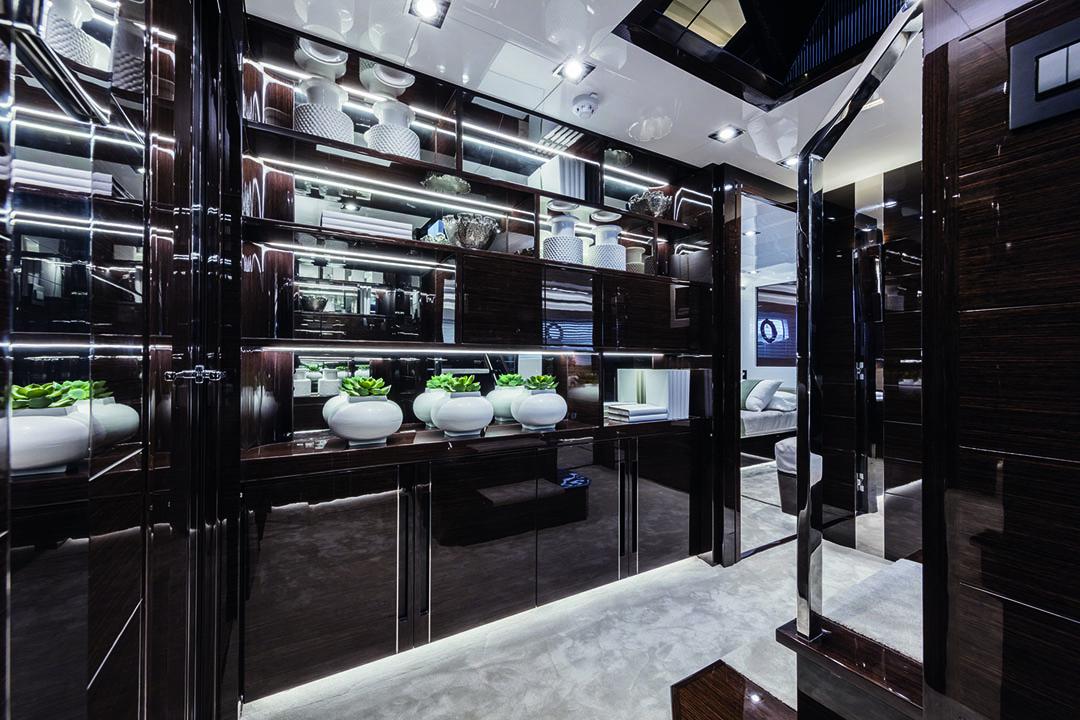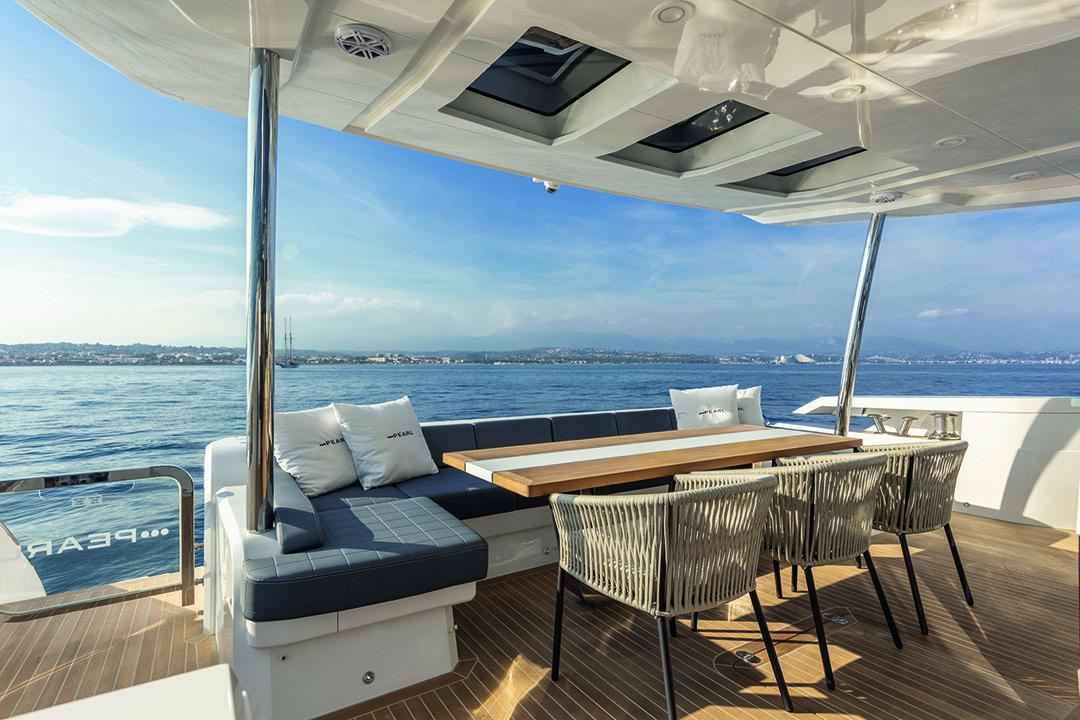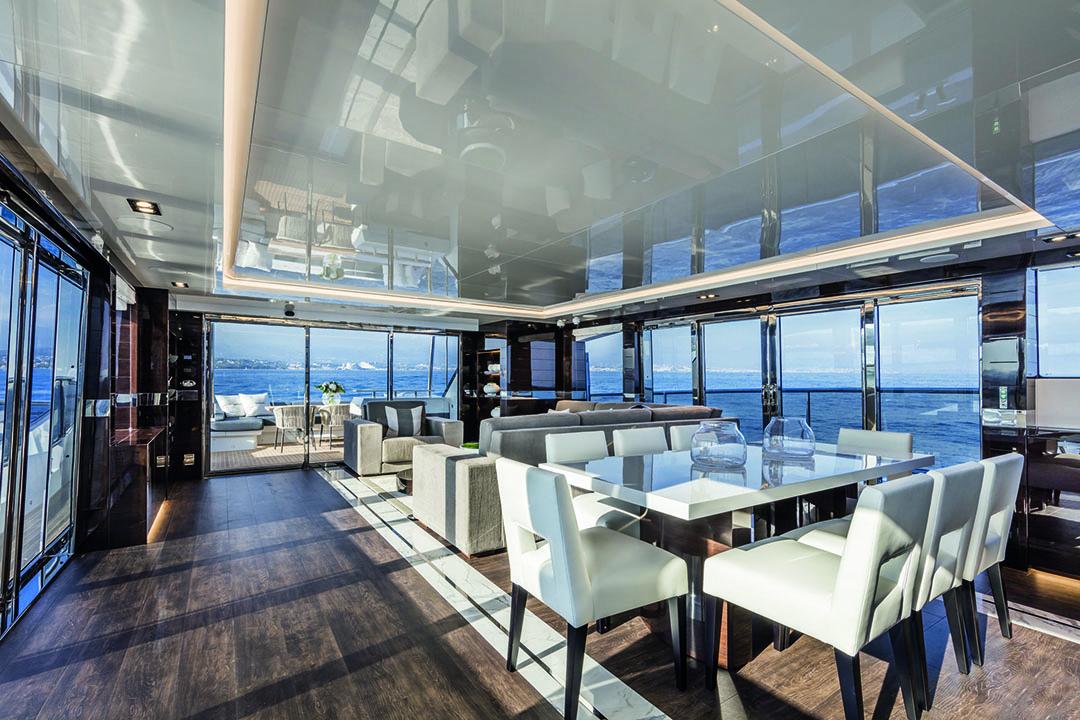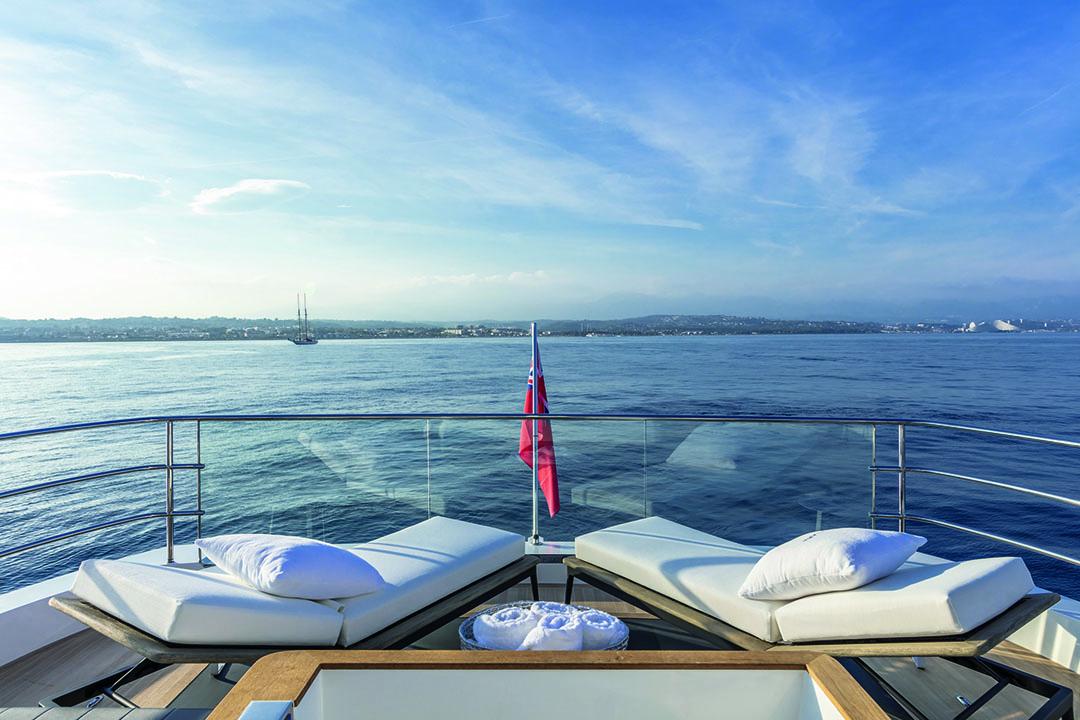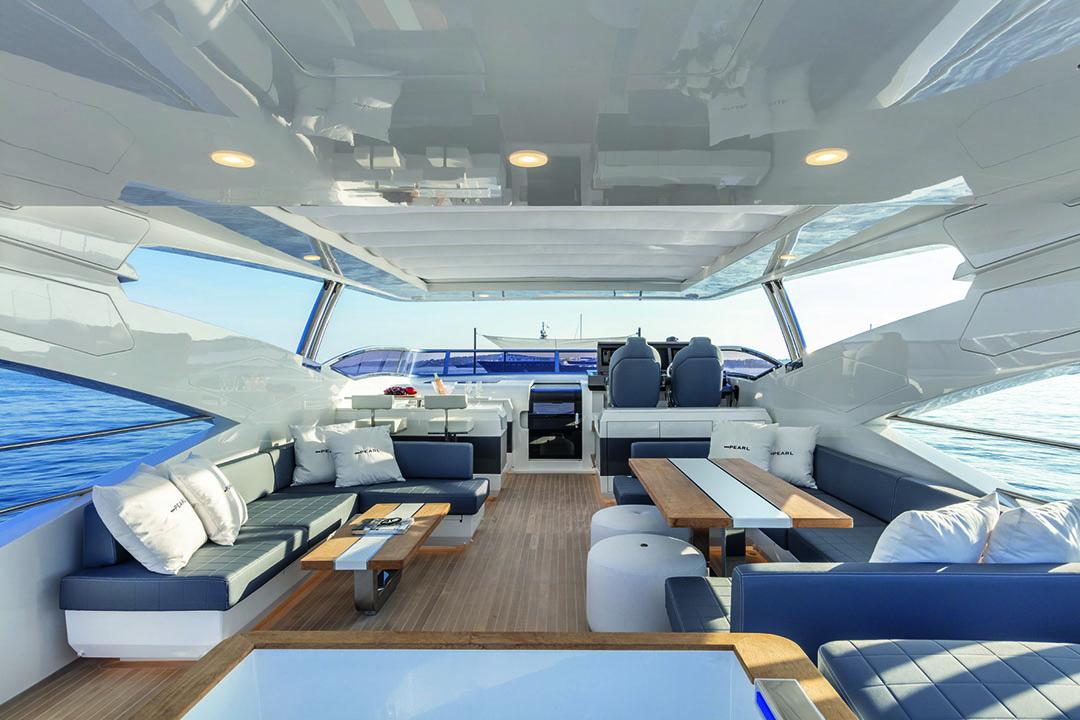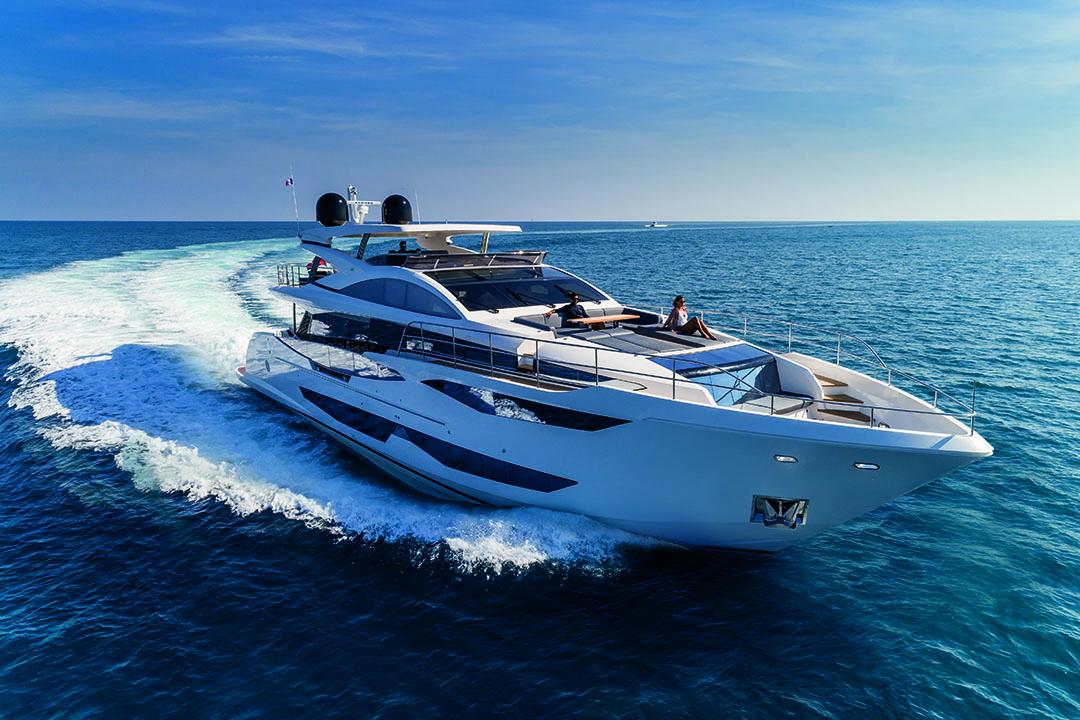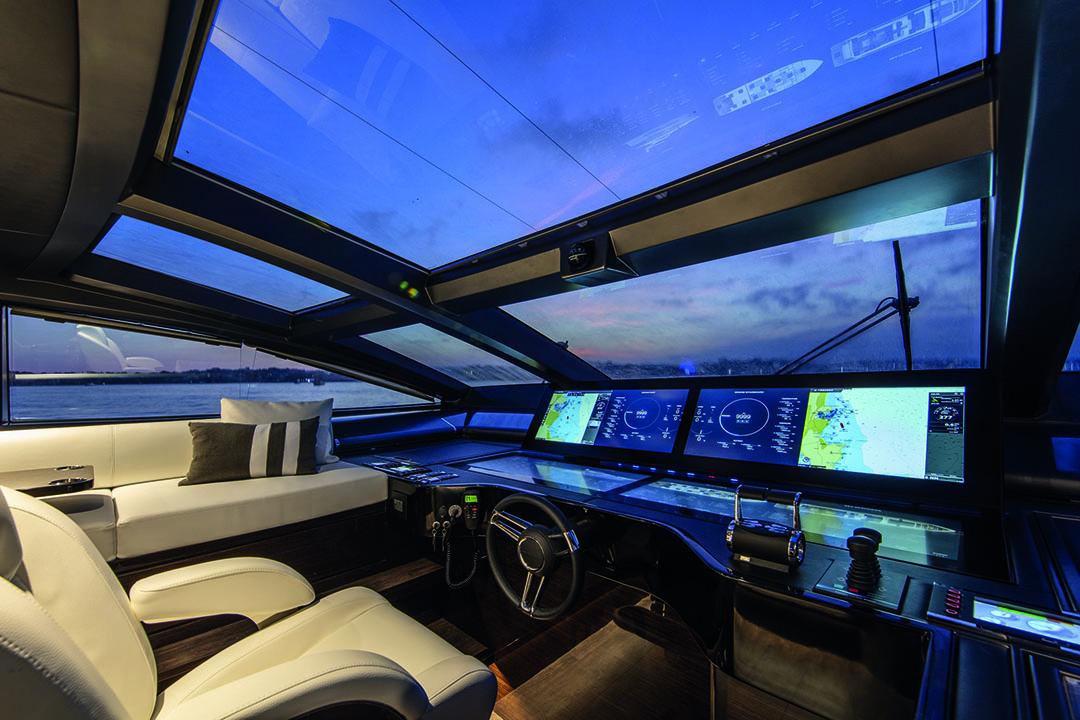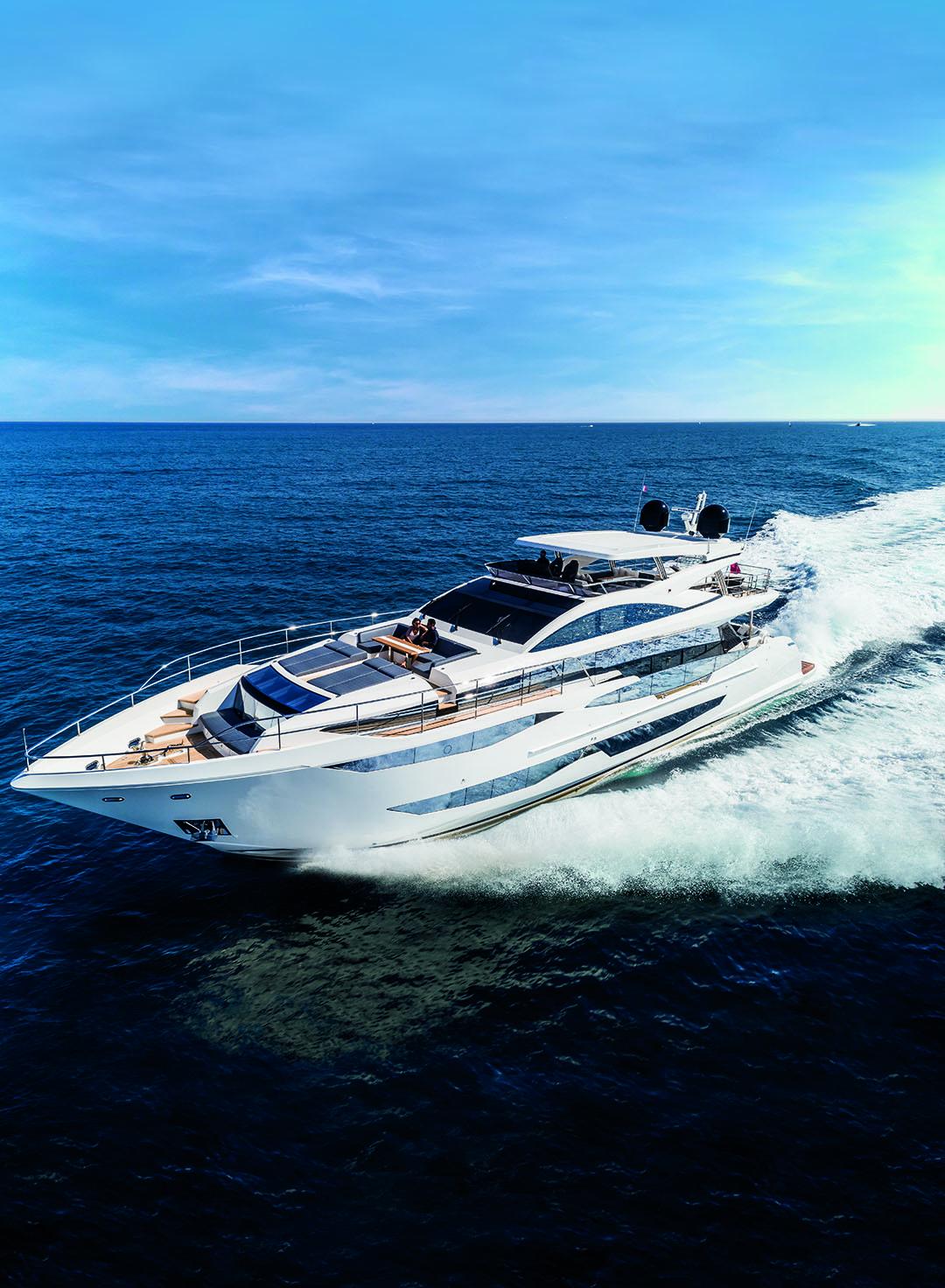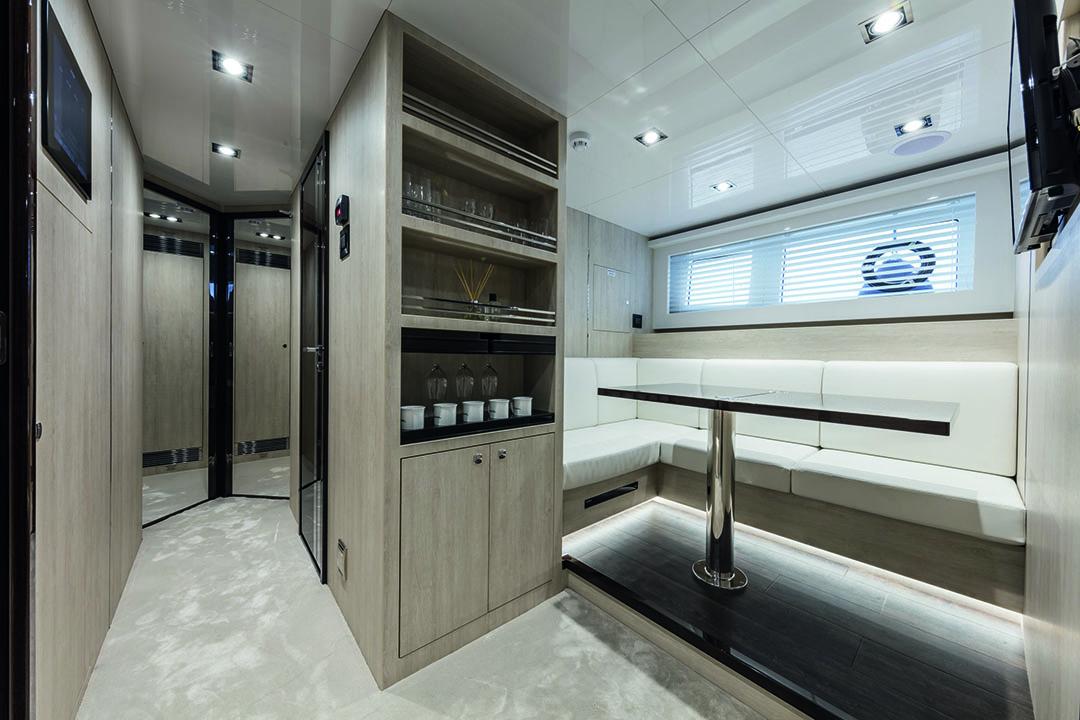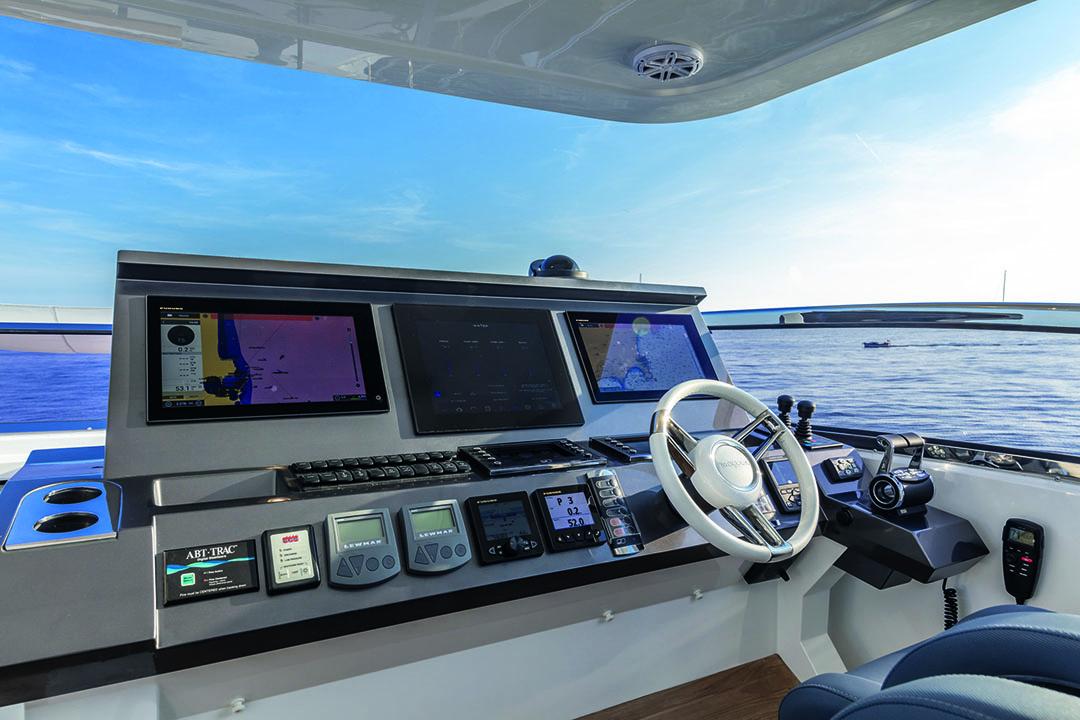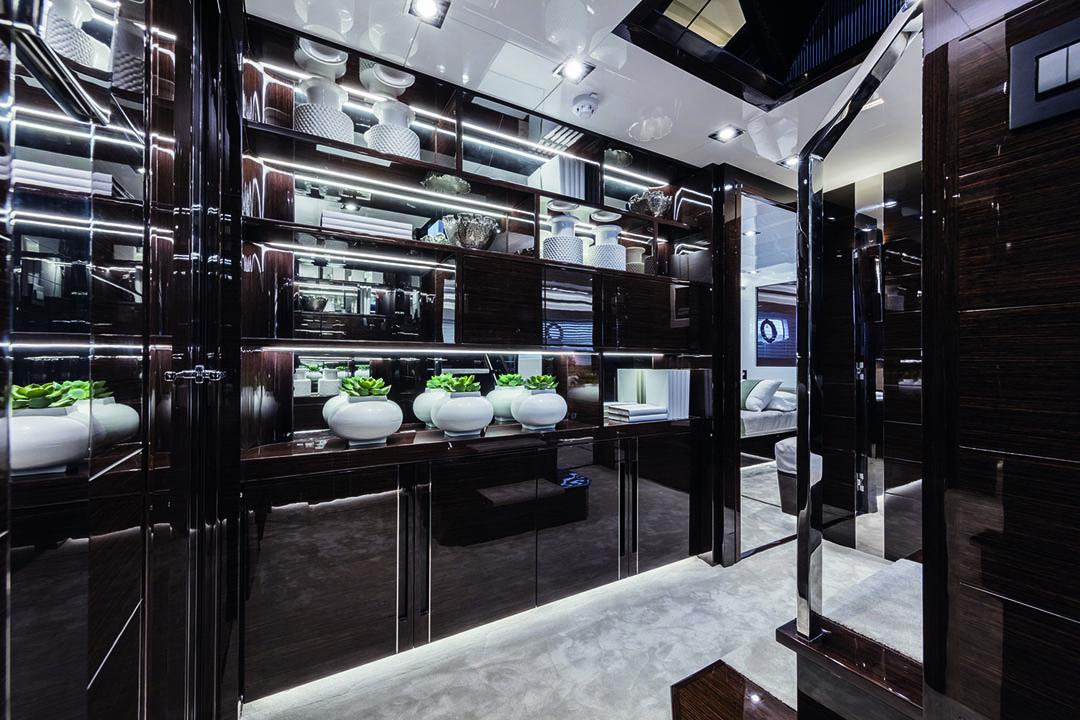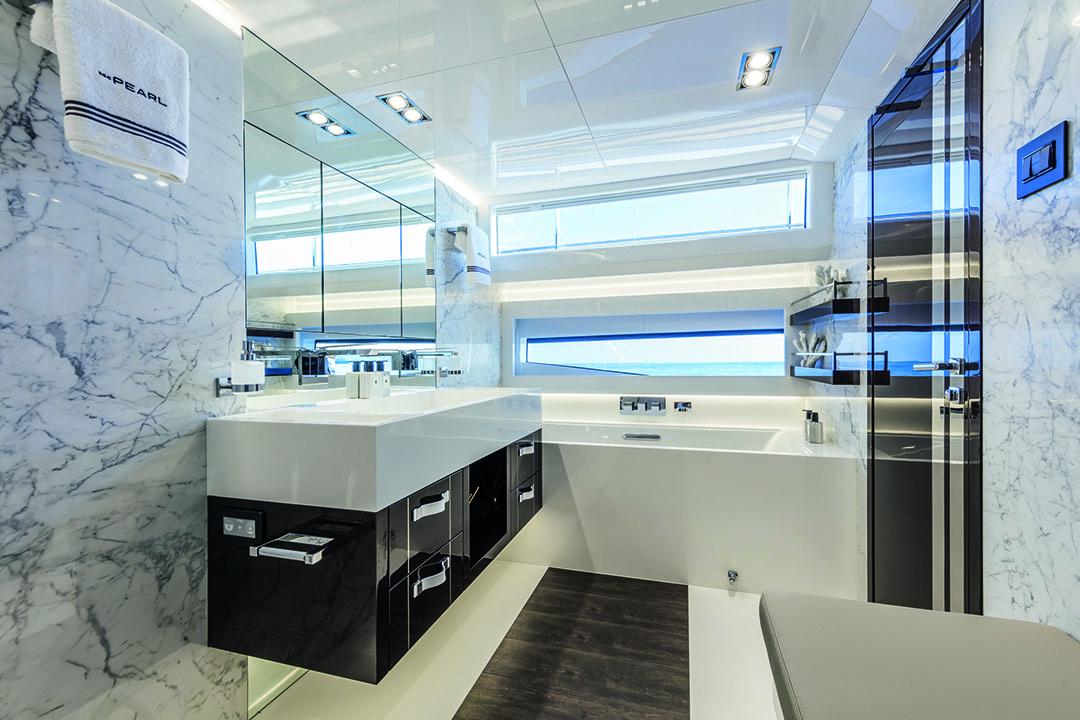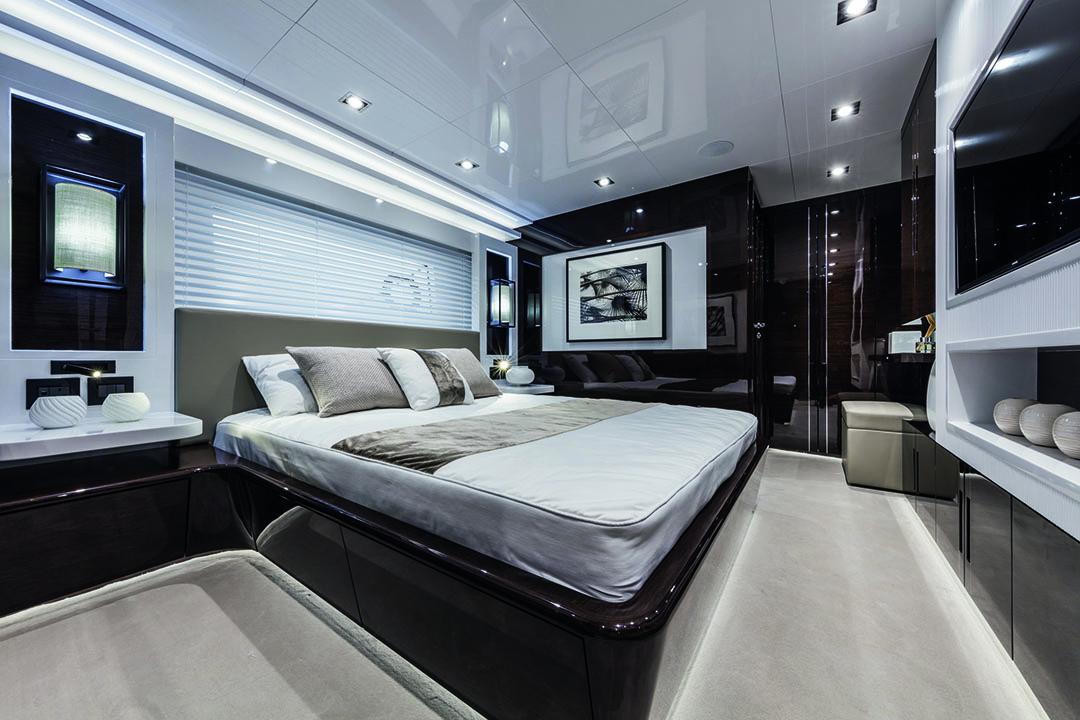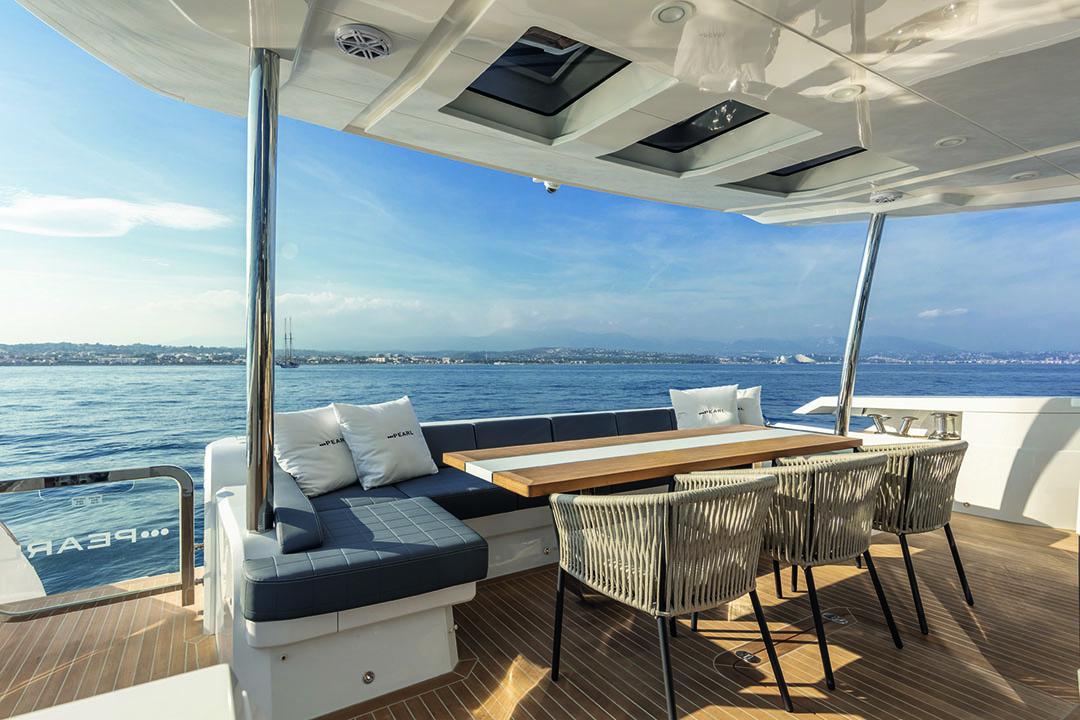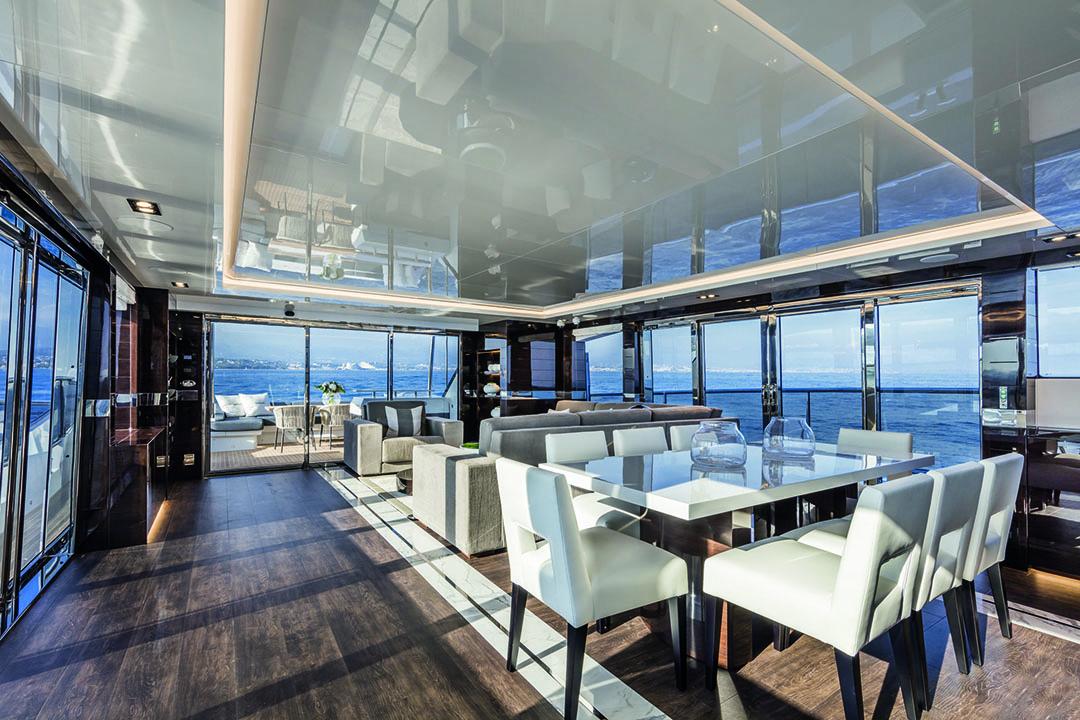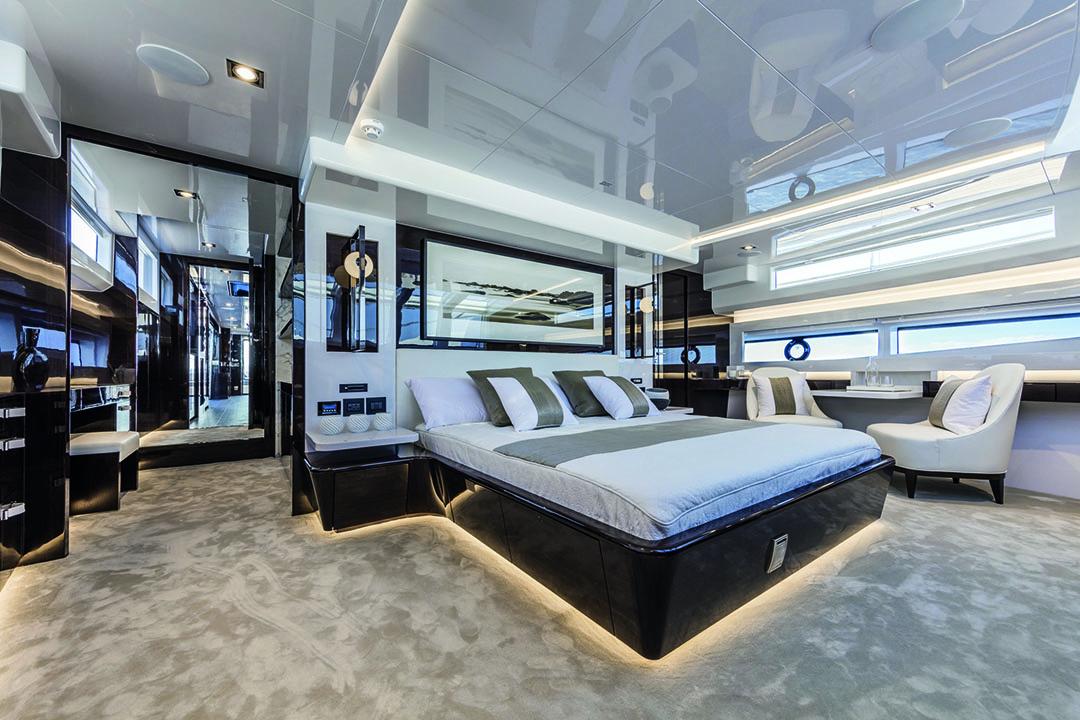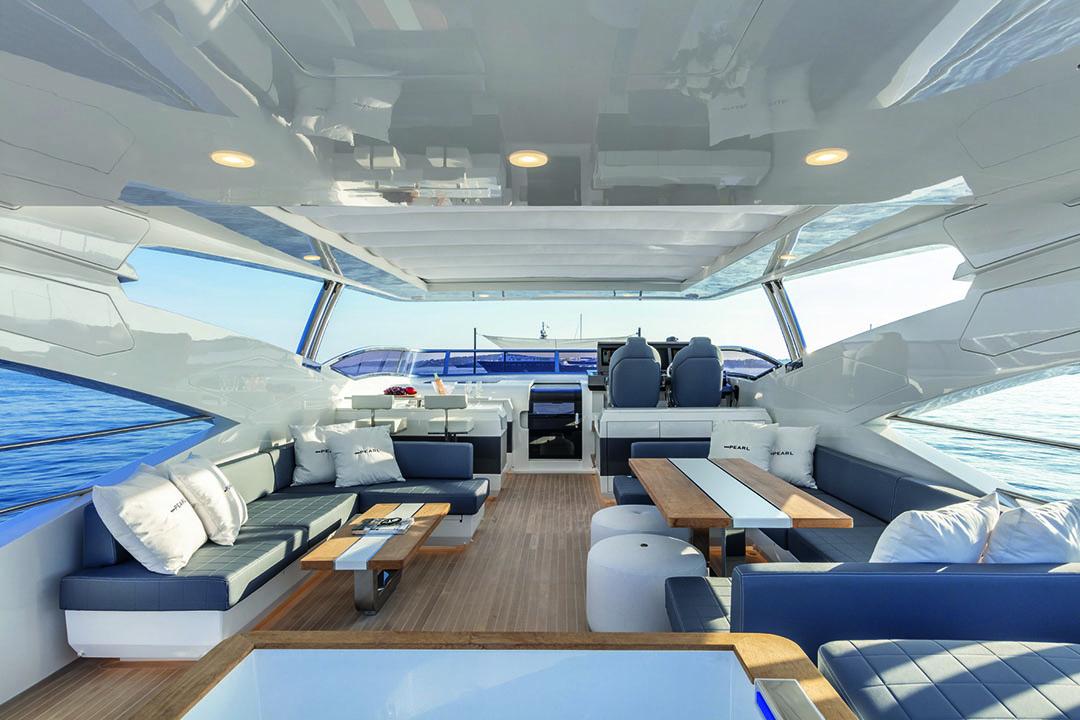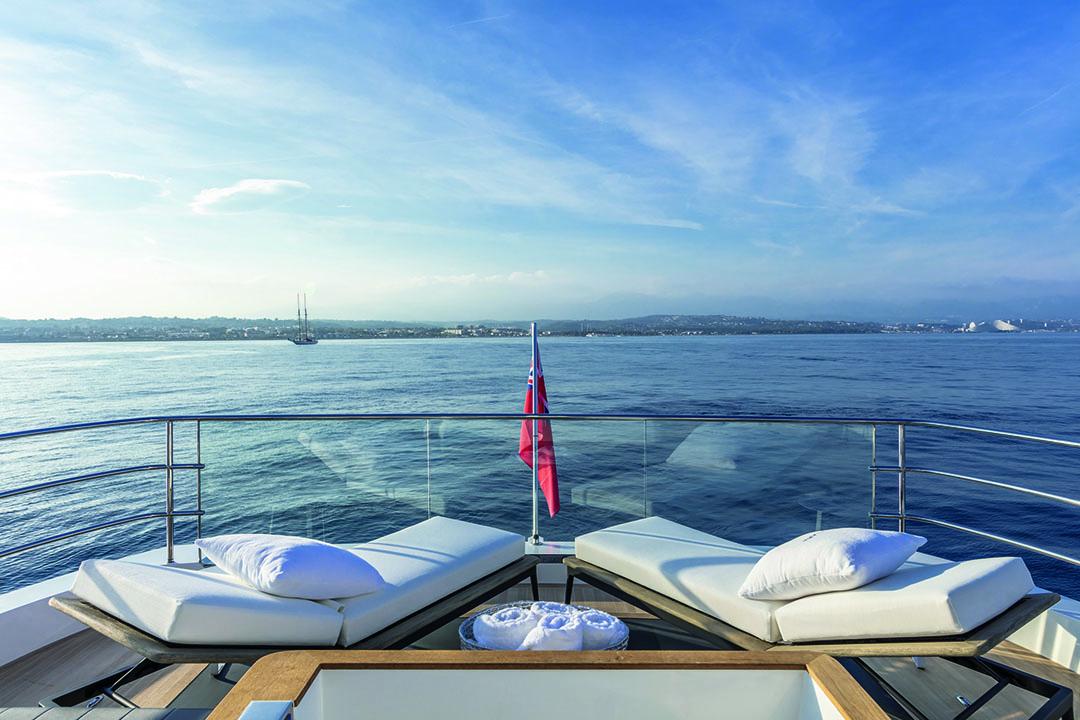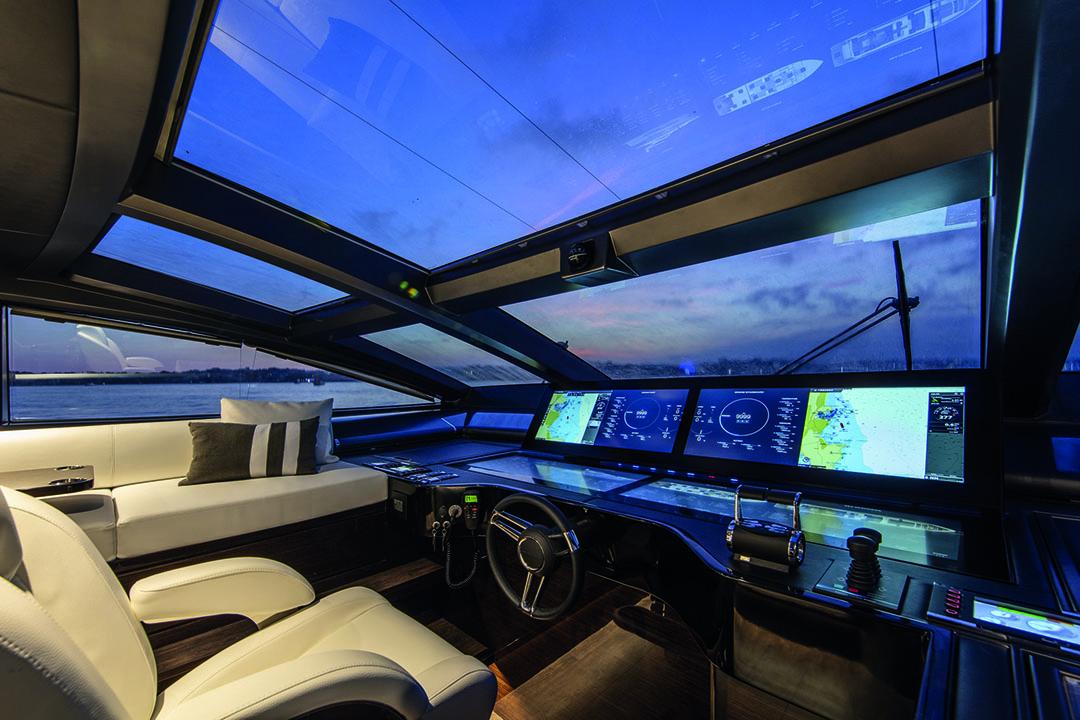Presentation
Yacht Class n°16 (march-april-may 2019)
Pearl Yachts Ltd
Such a nice exercise in style the new flagship of the British shipyard! Her deck layout reflects a great control of spaces, both outside and inside, ensuring both maximum comfort and a high level of functionality. Luxury, sweetness of life and seaworthiness harmoniously coexist on this 95 foot.
Written by Philippe Leblond – Photos : All rights reserved
Like her British competitors – the recent Sunseeker 95 Yacht or the Princess Y85 – the Pearl’s silhouette reflects some dynamism. She is also in the same aesthetic vein than her two older sisters, the Pearl 65 and 80. The shipyard is definitely creating a range effect, thanks to an ongoing collaboration with the architecture and design studios of Bill Dixon (hull and superstructures) and Kelly Hoppen (interiors). This stylistic kinship has a powerful identity. Fifteen feet longer than the previous opus, the Pearl 95 demonstrates the growing momentum of this shipyard based in Warwick (England), which intends to position itself in the world of luxury yachting. Although built in Xiamen (China), Pearl yachts are repatriated to the yard for finishing: furniture, parquet and various coverings (excepted marble). Nevertheless, the shipyard always keeps an English “eye” on this structural work conducted in the Middle Kingdom: “We delegate two construction managers in China, working in turns of two weeks to control the quality of the work” explained Iain Smallridge, managing director of Pearl Yachts Ltd. We must admit, this 95 foot, we tested in Palma de Majorca, seduced us at first sight. Perceived quality is worthy of the best units, volumes were optimized. From the moment you board, the feeling of luxury and space prevails, be it outside – on the cockpit, flybridge, or foredeck – or inside, thanks to the perspective offered by the large reception area or the spacious master cabin, forward the main deck.
Four or five guest cabins ?
This type of architecture has been fairly common, when approaching 100 foot. The main deck consists in a forward master suite, in continuation of the reception area, and a semi-raised pilothouse on a half level between the master and the flybridge. As expected, the guest cabins are all located in the hull (headroom of 2.01 m, shower rooms: 2.00 m). Let’s start our visit with this comfortable lower deck where are gathered a large “VIP” cabin and two twins, – all bathed in light via large portholes -, and their luxurious white marble en suite. The VIP is naturally full-beam and features a large bed positioned against the partition separating the room from the walking wardrobe and the bathroom. Forward the guest accommodation are the crew quarters, which feature a L-shaped saloon with TV, the captain’s en suite cabin, plus two cabins with bunk beds and a shared bathroom. The comfort of the eight guests can thus be ensured by six crew members! Note that Pearl Yachts also proposes a “charter” layout, with two double-bed en suite cabins in lieu of the VIP. One deck higher, we find the main saloon, with its lounge and dining area. This place is bathed with light thanks to its fully glazed automatic bay windows. Note that the shipyard went to the length since these double patio doors raise by a few centimetres from their recessed base before opening, to ensure tight sealing during rough seas. On our way to the master suite, we discover a WC, a large dressing room, a beautiful dressing table and storage furniture. But the originality of this cabin (headroom: 1.98 m, bed: 195 x 185 cm) – where the bed is positioned against the partition separating the room from its en suite (headroom: 2.02 m) with shower and bathtub – lies in the large front window opening onto the foredeck. Regarding decoration, Kelly Hoppen proposes three atmospheres. The one on this first Pearl generously uses dark varnished wood, white lacquer for the ceilings, white marble for bathrooms and polished stainless steel for the frames. It all creates a feeling of omnipresent luxury, that may seem too shiny to some.
Fancy lazing on a deck ? The only problem is choosing!
Five steps lead to the wheelhouse. The central steering station features a large Applied Marine’s glass bridge navigation system. In his leather armchair, the skipper suffers from poor rearward visibility. It gets better when standing… The large raked and partitioned windscreen is spectacular, but here again, visibility is not optimal. Five more steps lead to the flybridge. There, the retractable soft canvas of the hardtop give the guests, around the saloon or at the bar enjoying barbecue grills, the option of shade or sun. Unless they opted for the aft jacuzzi or sunloungers, and the breathtaking view. The passengers can also choose the peaceful cockpit lounge, with its direct access to the large submersible bathing platform, which can be extended by the two buttresses folding out from the aft hullsides, or to sip a cocktail at the beach club’s bar… Note that the large foredeck salon, “sculpted” in the superstructure and fitted with a bimini, is also appealing for passengers wishing to smell the sea air in navigation…
Captain Simon, assisted by his wife Kursty, sounded the reveille for the large MTU diesels. In the marina, in slow motion, the large V16s are barely audible, proving the adequate soundproofing of the engine room. It was also corroborated by our measurements at 2 000 rpm and 18 knots: 63 decibels in the wheelhouse, 70 in the saloon and 64 in the main cabin. We pushed the gas levers forward at a sufficient distance from the pier. Powered by the 32 German cylinders, the two large propellers energetically stirred the water. Yet it still took 45 seconds to see 20 knots on the flybridge’s Raymarine/Garmin navigation system. This modest performance might be imputable to the V-drive transmissions (CGR), whose additional angular gearbox absorbs some power. The only downside of our sea trial was the few vibrations we felt on the flybridge structure at a cruising speed of 2 000 rpm… which, for the captain, can be fixed by a better choice of propeller.
An easy vessel to manoeuvre
As for the rest, nothing but positive results, starting with comfort in navigation. Despite a calm sea (a 50 cm lapping and a force 3 wind), we were able to make several passages on our own wake (of about 1 m). We attacked it from different angles, without feeling any significant impact. The hull operates smoothly, and the helm is both precise and responsive to heading changes and turns, regardless of the turning radius. At a maximum speed of 2 430 rpm, we reached 26 knots, with full tanks and 12 people on board, a result close to the shipyard’s expectations (28 knots). She can gain two more knots with the maximum engine configuration: two 2 600 hp MTU. Yet, a higher power will likely be detrimental to the range, which, according to our calculations (with a 10% safety margin) should reach 258 miles at 22.5 knots… Settling for a lower power is possible with the standard engine configuration and its pair of 1 925 hp Caterpillar C12. Finally, another source of satisfaction was the boat’s quick capacity for avoiding manoeuvres on site, with the reversers, without even using bow and stern thrusters, which will also further increase her rotational speed. This is essential in port, when traffic or wind require to manoeuvre without delay….
The Warwickshire yard hopes to produce two 95 foot this year, and three in 2020. This objective seems achievable since this yacht has serious assets to seduce both private owners and charter companies.
Technical sheet
